1lumen selects and reviews products personally. We may earn affiliate commissions through our links, which help support our testing.
Vosteed Rook review
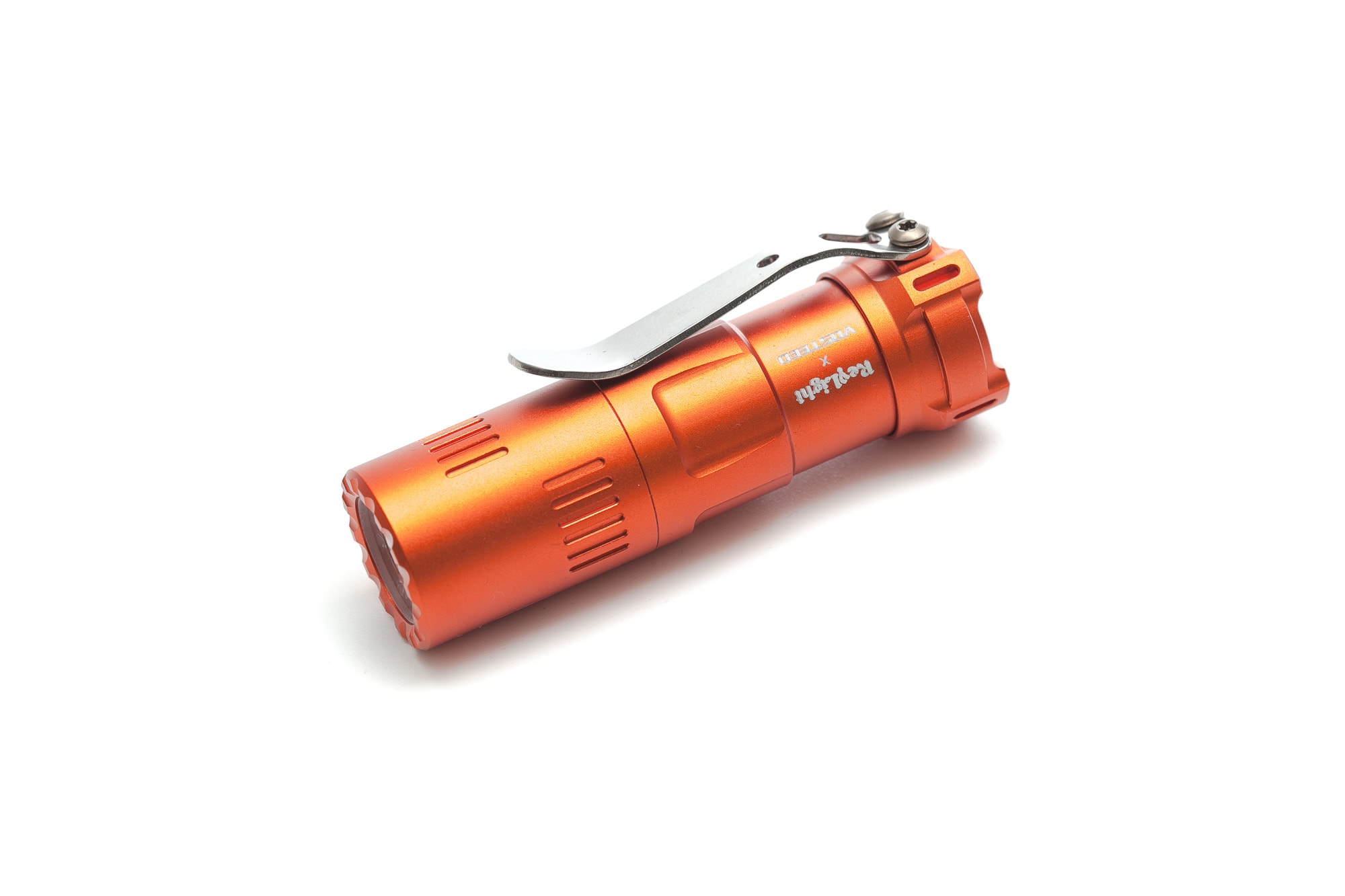
Vosteed Rook specifications
| Brand/model | Vosteed Rook |
|---|---|
| Flashlight category | EDC flashlight |
| LED | 3*CREE XPL Hi |
| Max. output | 3,000 Lumens |
| Max. beam distance | N/A |
| Max. beam intensity | N/A |
| Battery config. | 1*18350 |
| Onboard charging | N/A |
| Modes | Multiple |
| Blinkies | Strobe, SOS (available in 1 mode group) |
| Waterproof | IPX7 |
| Review date | April 2023 |
Review intro:
If you’re a flashlight enthusiast, you’re probably familiar with Reylight. It’s a small manufacturer and has some unique designs. Some of the most well-known models are the Reylight Pineapple, and a very nice-looking Reylight Krystal. But today we are looking at a flashlight that is the result of a collaboration between Reylight and knife maker Vosteed.
Vosteed may not ring a bell to most people in the flashlight community. And that’s because their main focus has been knives and not flashlights! So here we have a new flashlight, named Vosteed Rook
And I must admit, that the pictures I saw don’t do justice, because the Rook looks much nicer in person.
Package quality.
The thing that influenced my first opinion was likely because of the packaging.
- The flashlight name
- Lanyard
- O-rings
- Warranty card
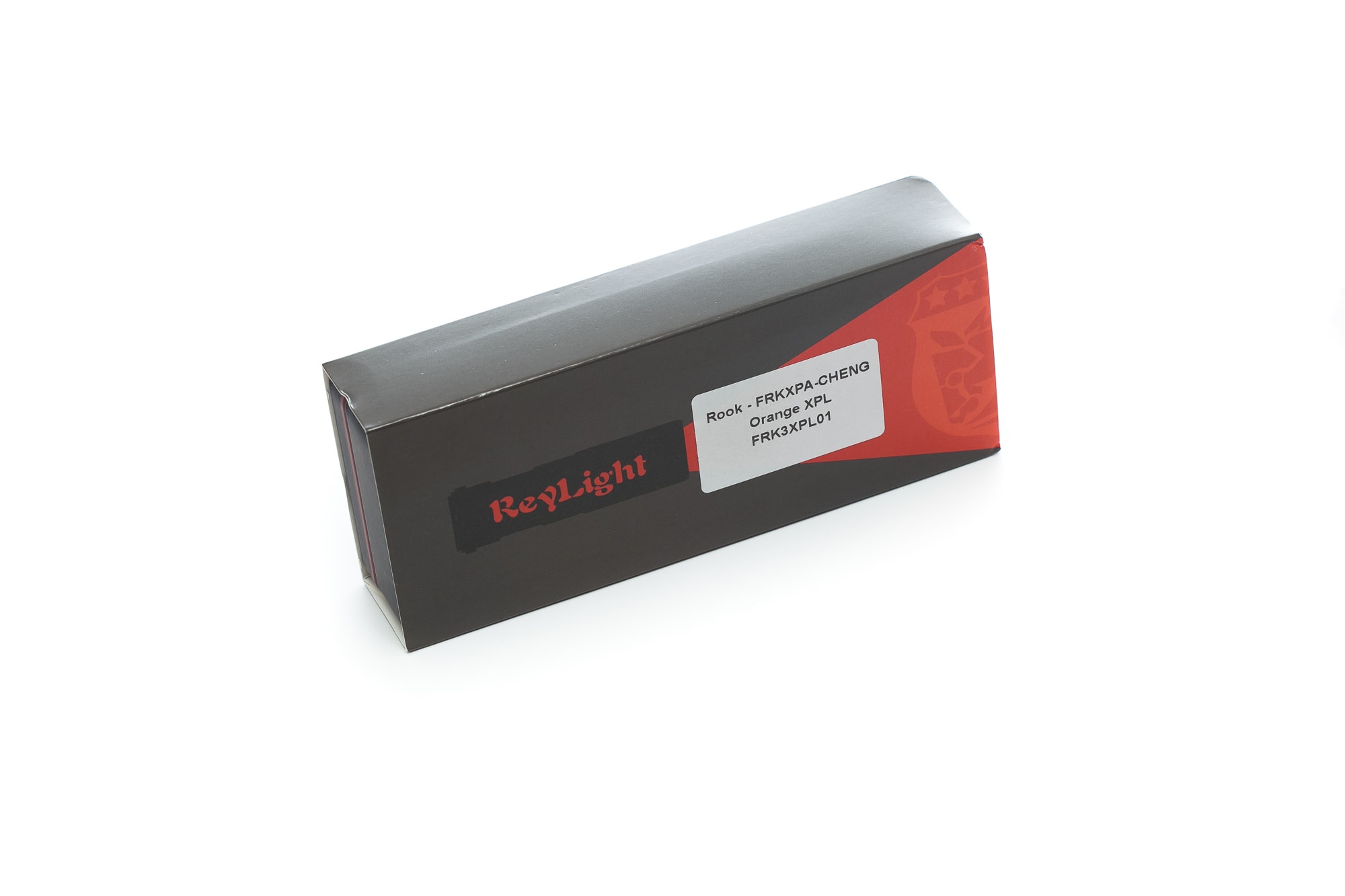
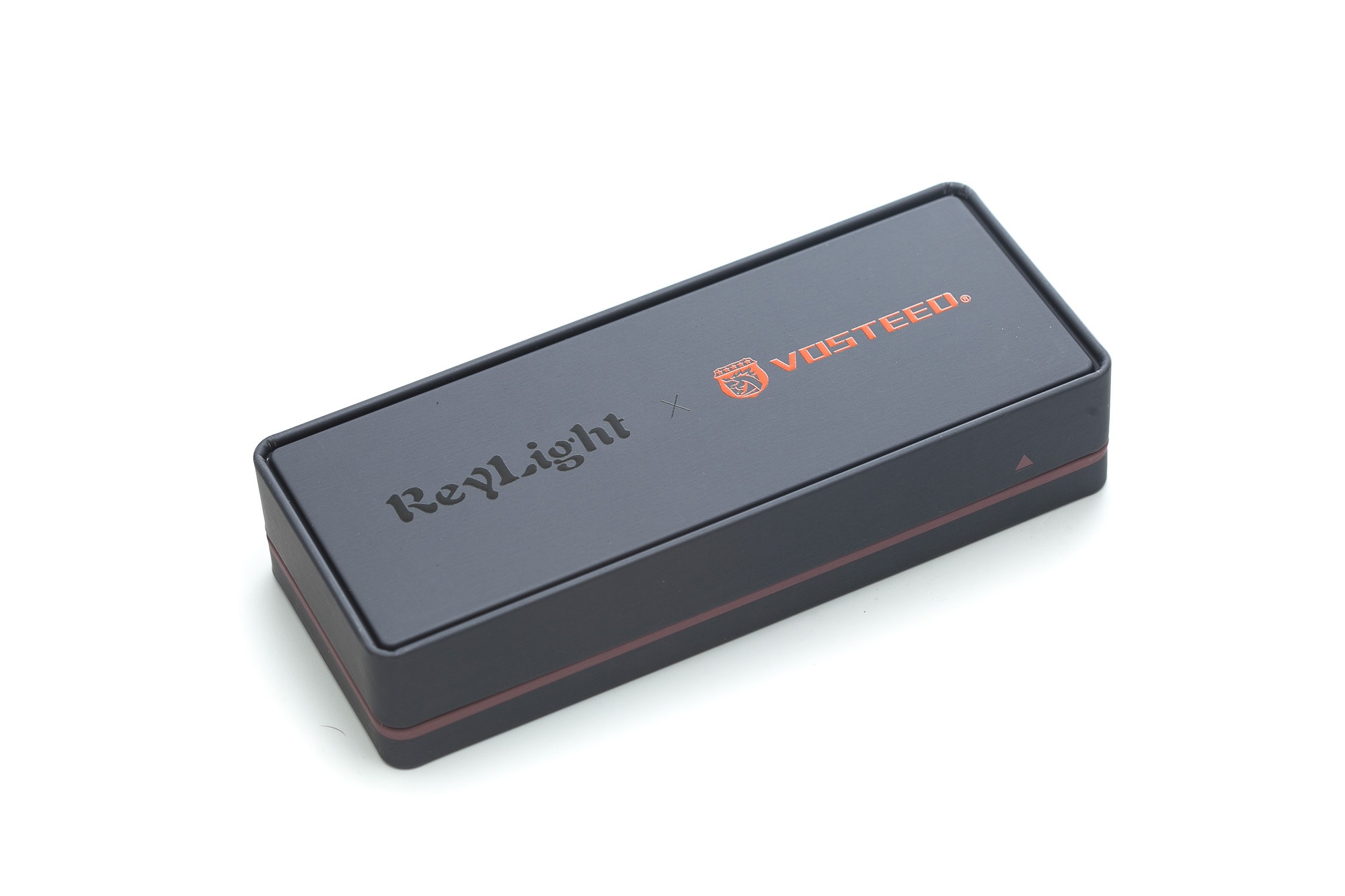

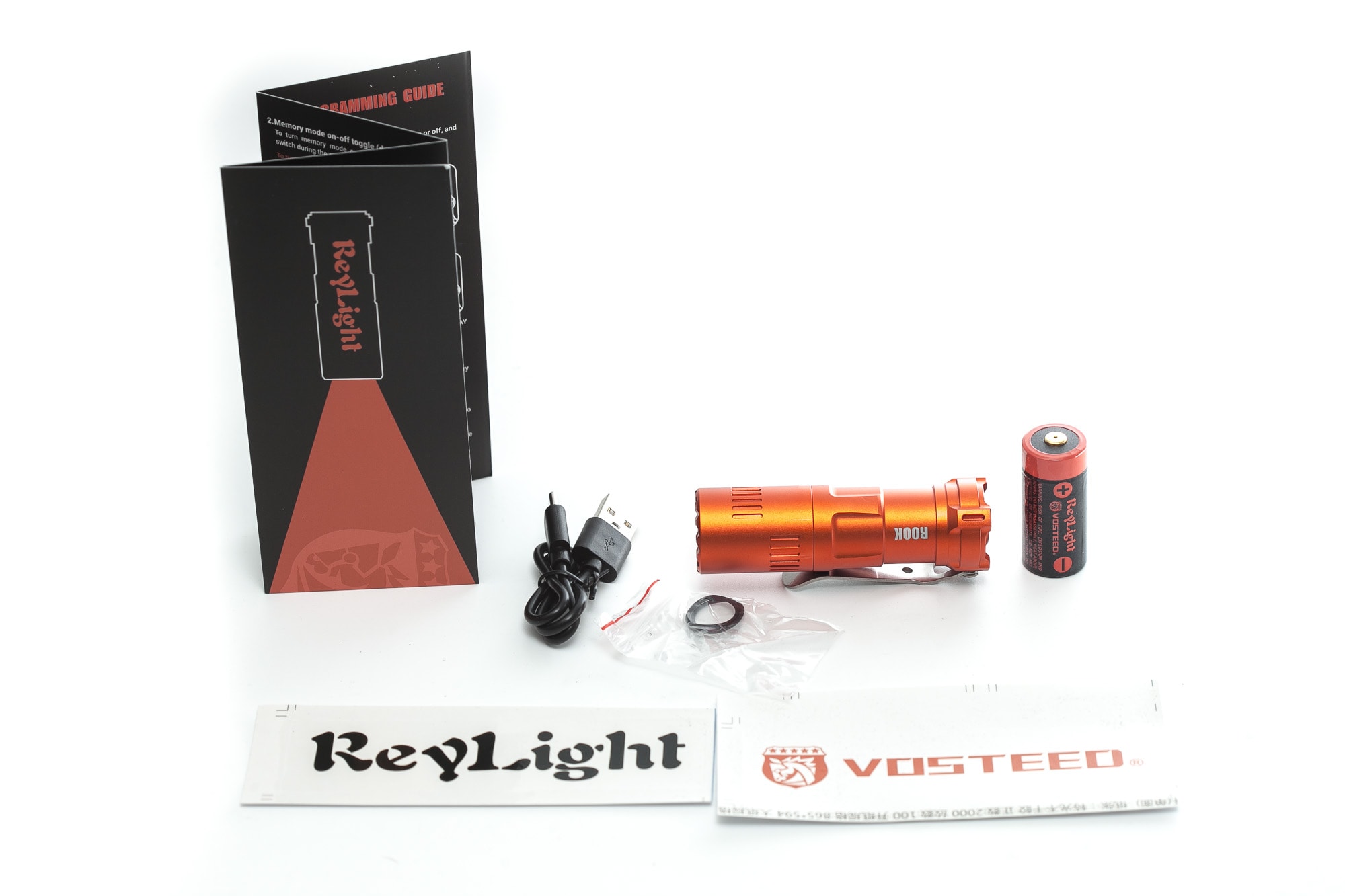
Flashlight in use
Before using, you need to remove the paper-type battery insulator, by unscrewing the flashlight head. After that, i’d recommend charging the battery to get maximum power and runtime.
One of the first things you’ll notice is the reverse clicky switch, which may sqeak a little when pressed from the side. I guess you’ll get used to it pretty quickly, or the sounds goes away. You could also use some sort of lubricant to reduce that.
All this is pretty normal because it’s not a rubber booth like many other flashlights.
The body lacks any traditional knurling and can feel slippery, but it features several machined parts rather than one long flat piece of aluminum.
However, the pretty large pocket clip (compared to the body size) is probably the main part that provides you with some grip. And it’s pretty snappy, so you won’t have to worry about accidentally slipping it off your belt/pocket. The same clip adds to its overall appearance. Without it, it would be too slippery, and not look as good! And last but not least, it helps the flashlight from rolling of a slightly inclined surface.
There is no lanyard included in the package, but the clip would be the best place to attach it to.
When we’re talking about use cases, the first thing that comes to mind is EDC. And that’s mainly because of the small size, and battery. Plus, it’s pretty light weight, so easy to carry around.
But with the colorful coating, I can see it being pretty useful for outdoor activities as well, including camping, geocaching etc. If you drop it, you would find it back much quicker.
And to improve its aesthetics, you can add 4 glow tubes, or tritium vials near the rear end of the flashlight, and 3 in the metal power switch.
In case you wondered, you can also make it tailstand… without a problem.
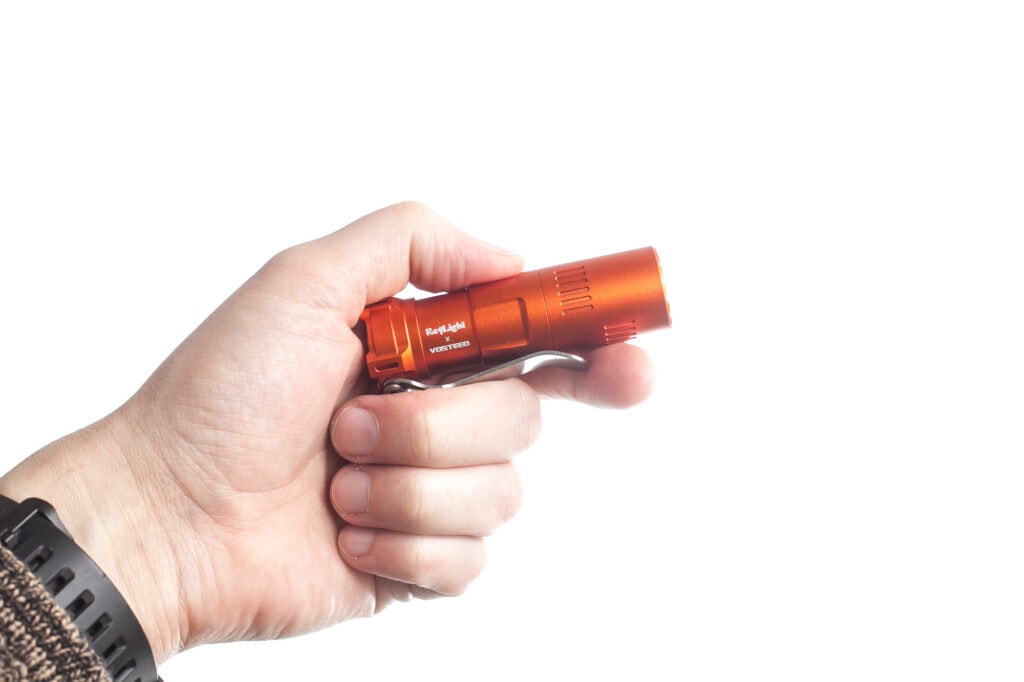
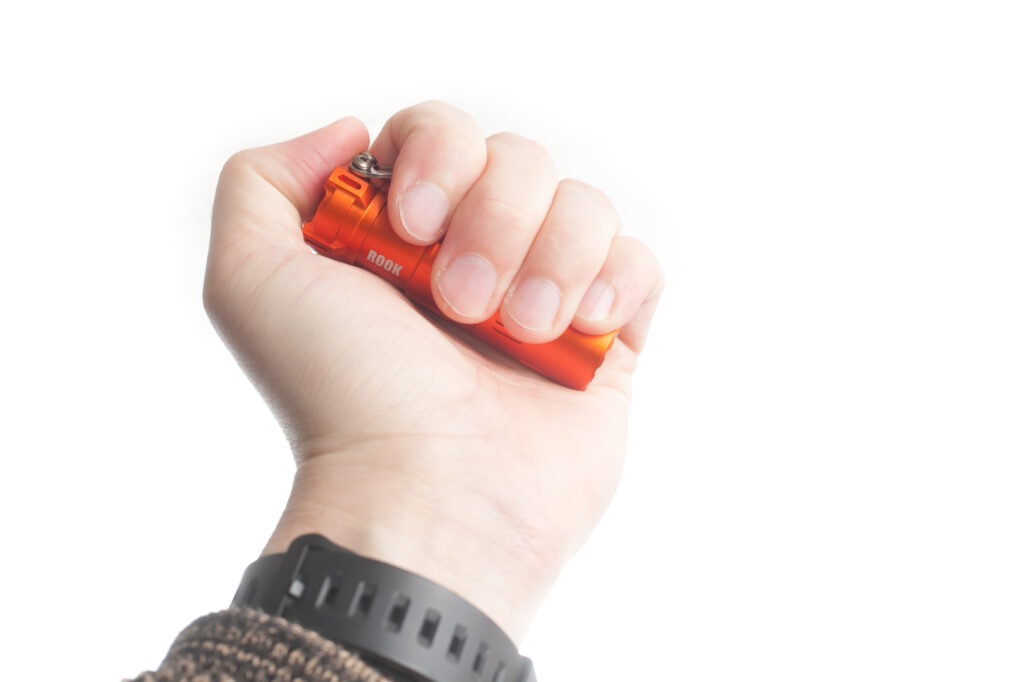
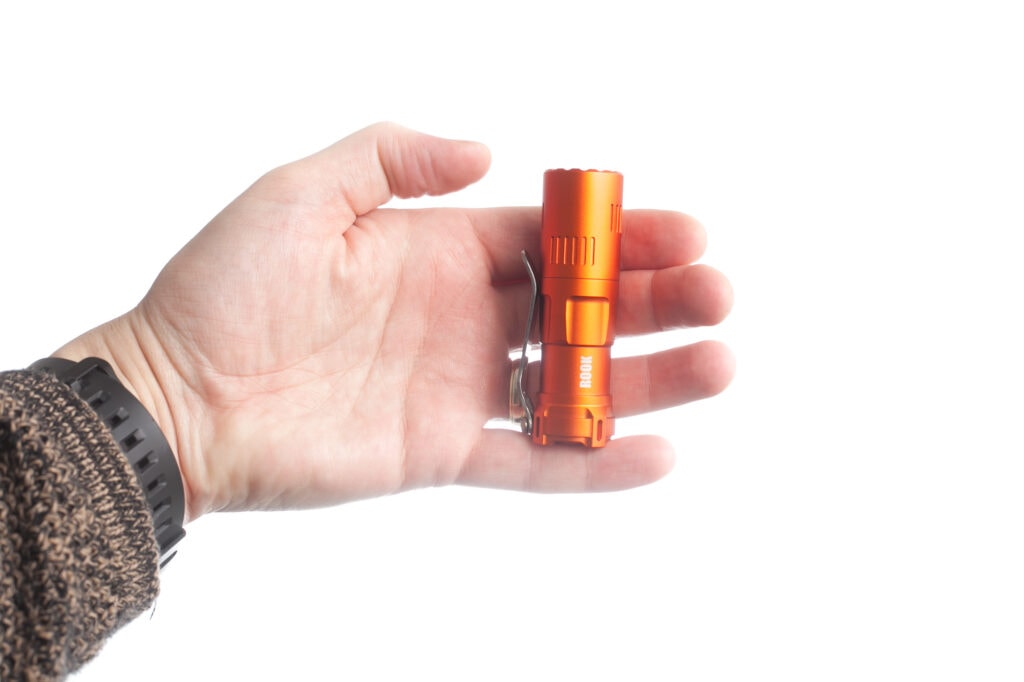
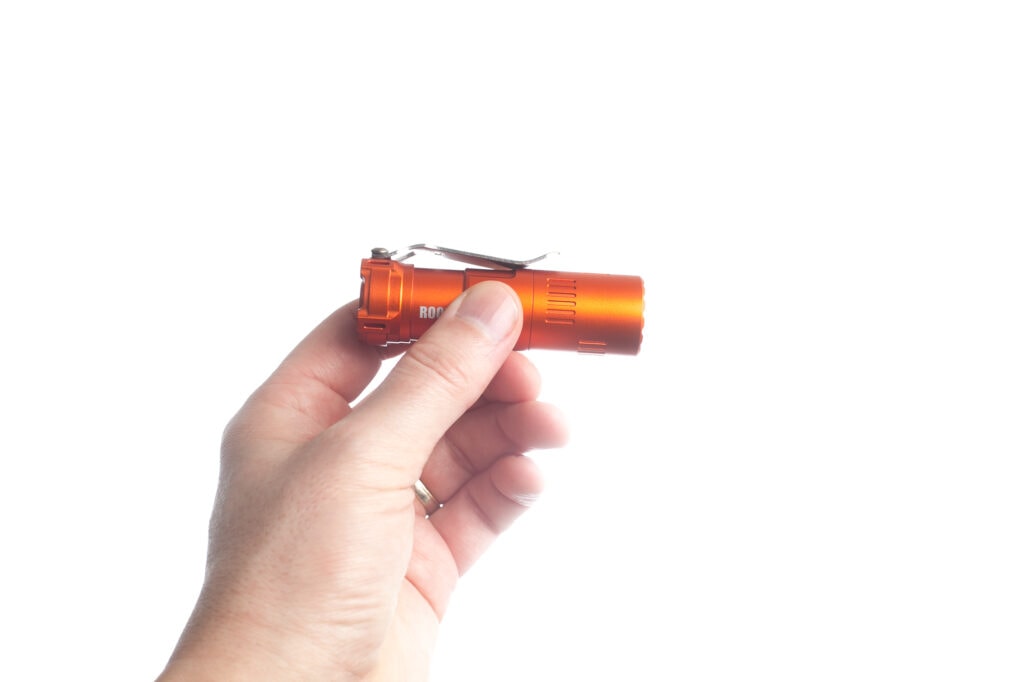
Build Quality and Warranty
The build quality of the Rook is pretty decent, but its design isn’t the most interesting. It has some unique ideas, but nothing to make it stand out from other brands.
I don’t see any design elements to set this flashlight apart from other brands on the market. Maybe that’s what Vosteed and Reylight could still improve upon. When i see this flashlight, I wouldn’t recognise it as a Vosteed or Reylight yet.
Okay, we should be talking about build quality.
The threads are bare, with some lubrication. But the threads are relatively sharp, and can sound squeaky. And bare threads can be a benefit or downside. If the flashlight is turned on, and you unscrew the head slightly, you can still operate it. That could be a benefit.
At the same time it means you can’t unscrew for lockout.
The material used for the Rook is aluminum, and the one I received is coated with orange anodization. And even though there is (currently) no other material available (like titanium), you still get to choose from several other colors, including Blue, Black, Gray, and Red. But only Black and Orange have the option to choose between Nichia 519A and CREE XPL, while the others are only available with Nichia 519A LEDs.
Warranty: directly from Vosteed
“Product returns must be in their original packaging and unused condition within 30 days from the date of your purchase. Please note that Vosteed does not warrant our products against normal wear, misuse, disassembly, or product modifications. Vosteed covers shipping if you get the wrong item or defective item out of the box. Please note that products being used, damaged, and disassembled do not apply to our store policy. “
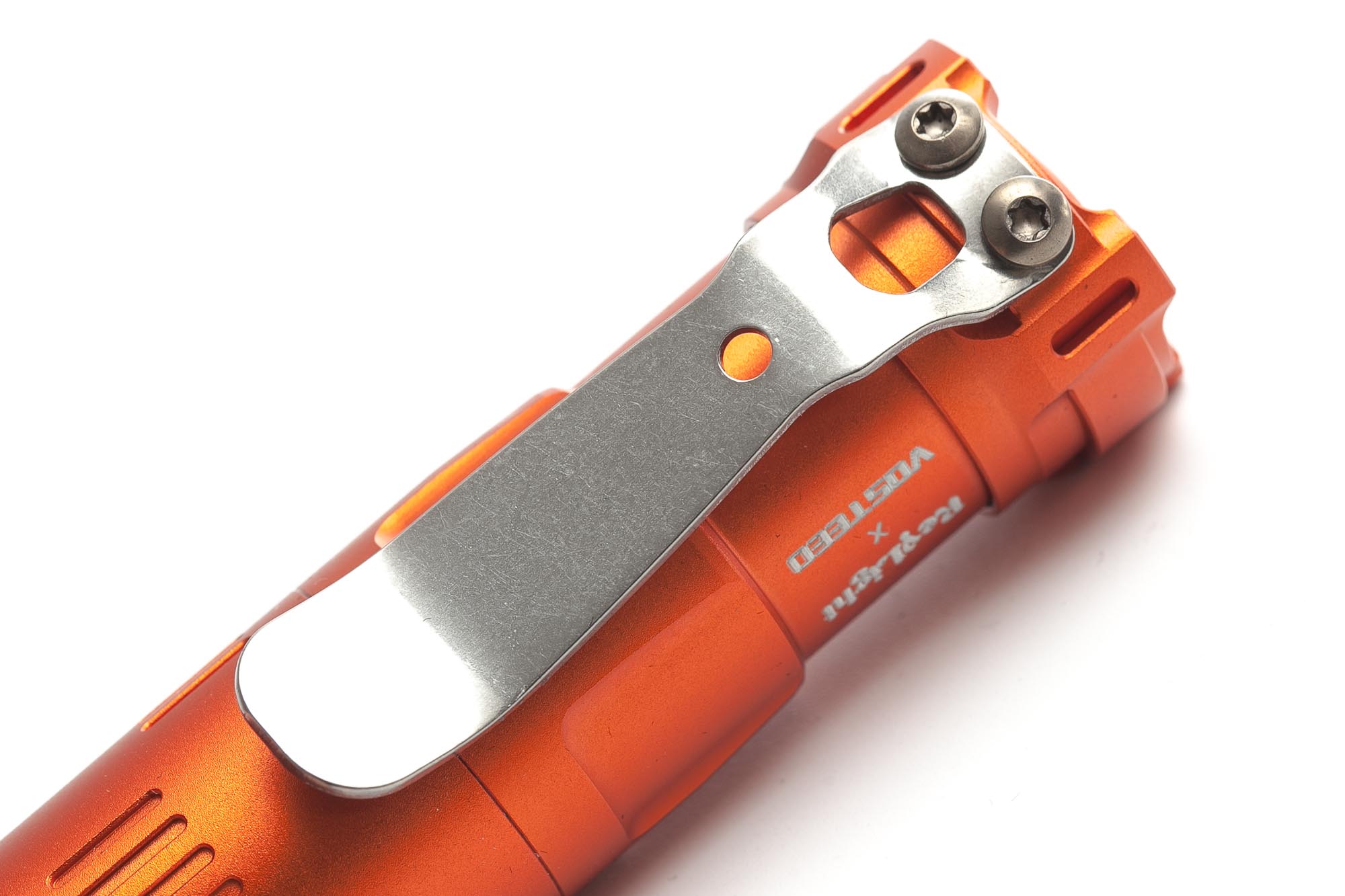
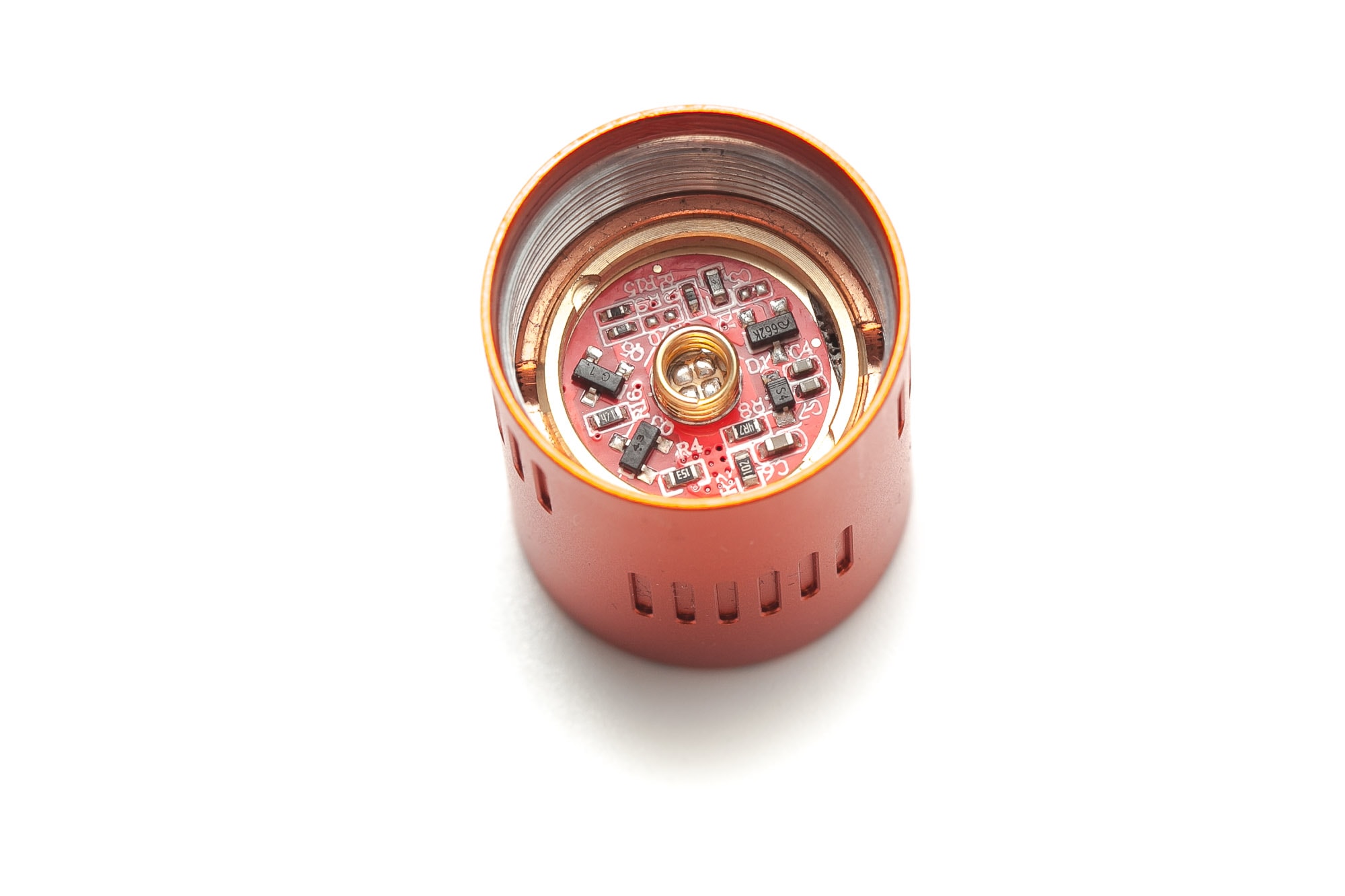
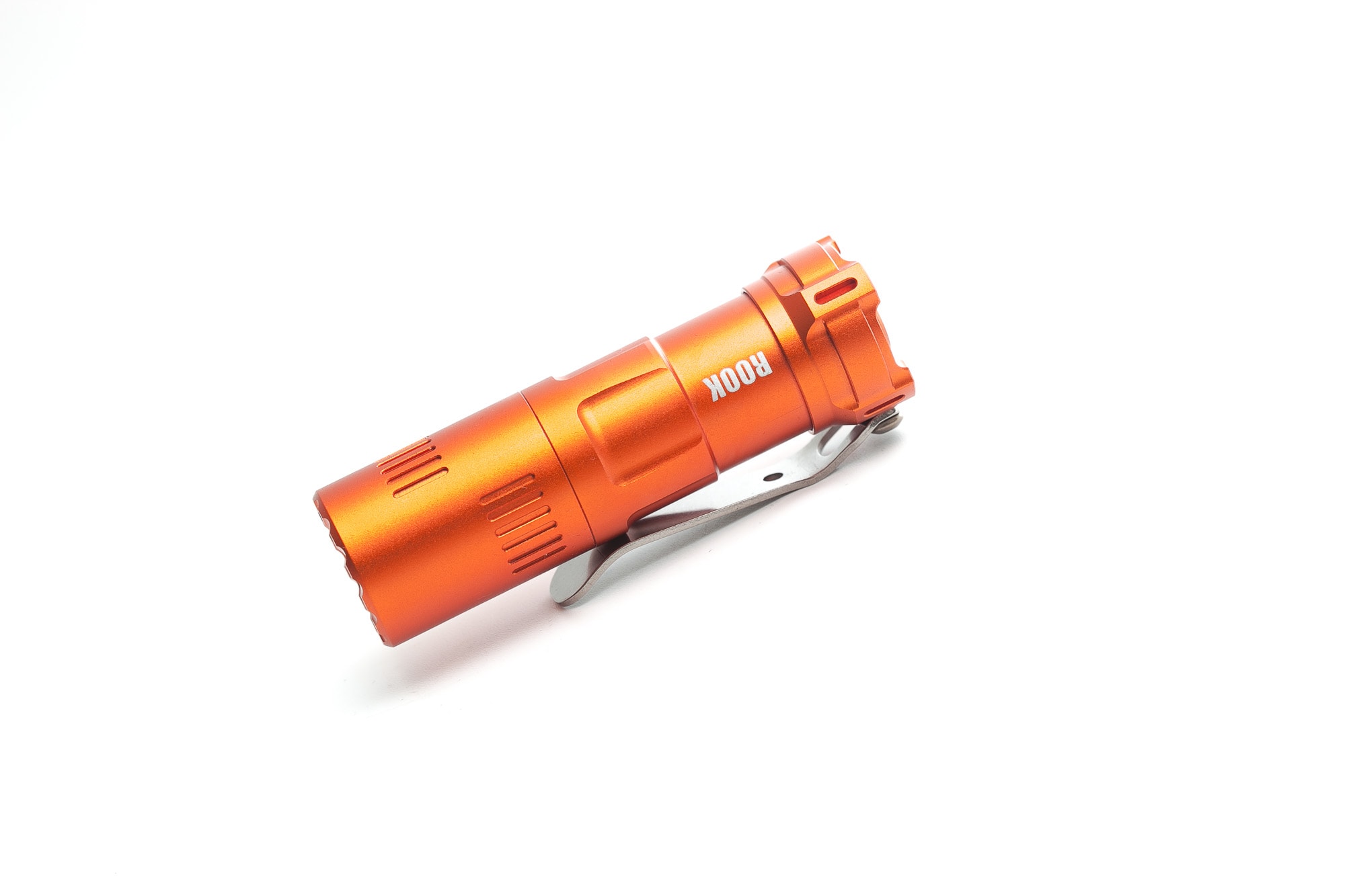
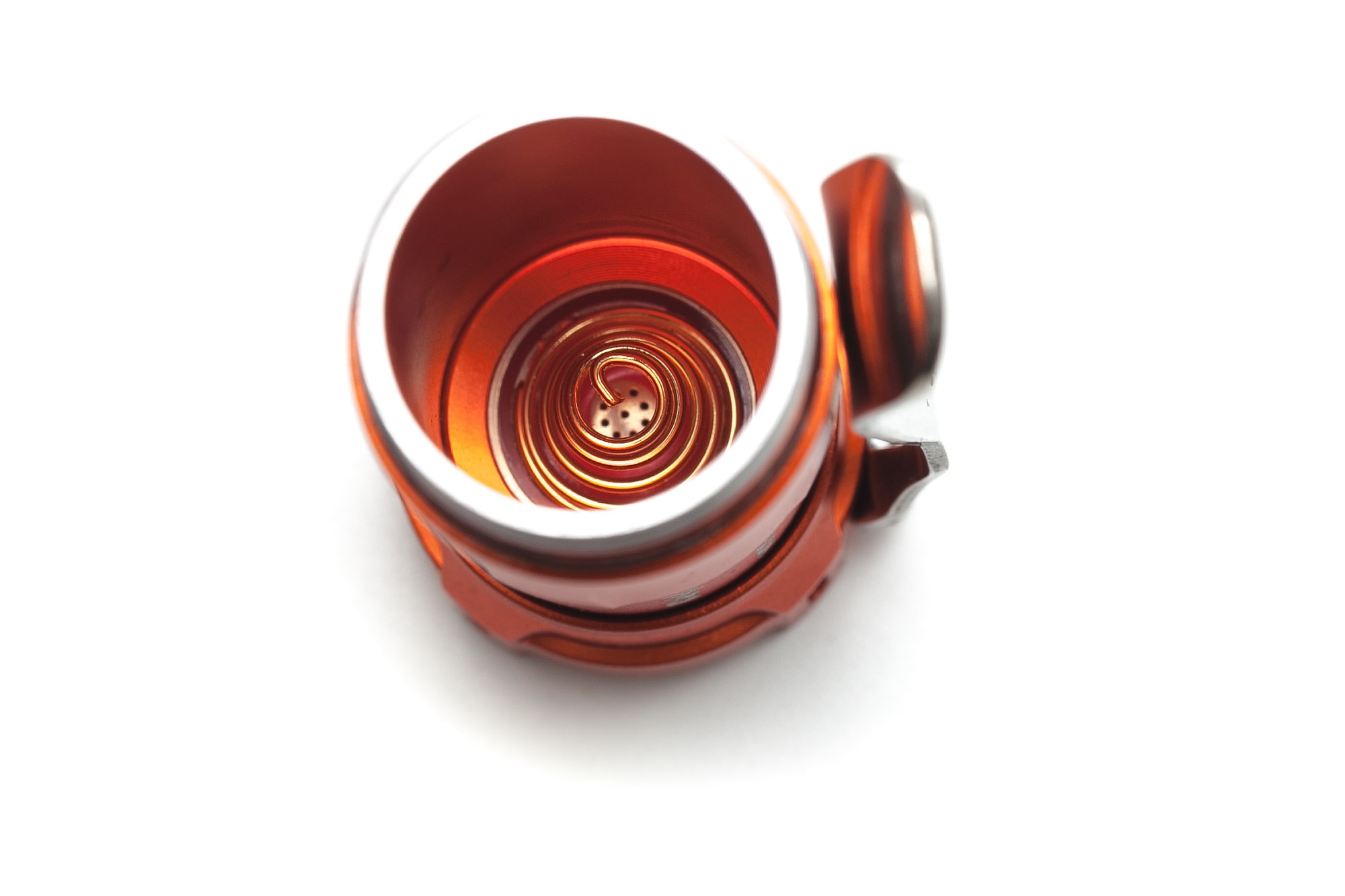
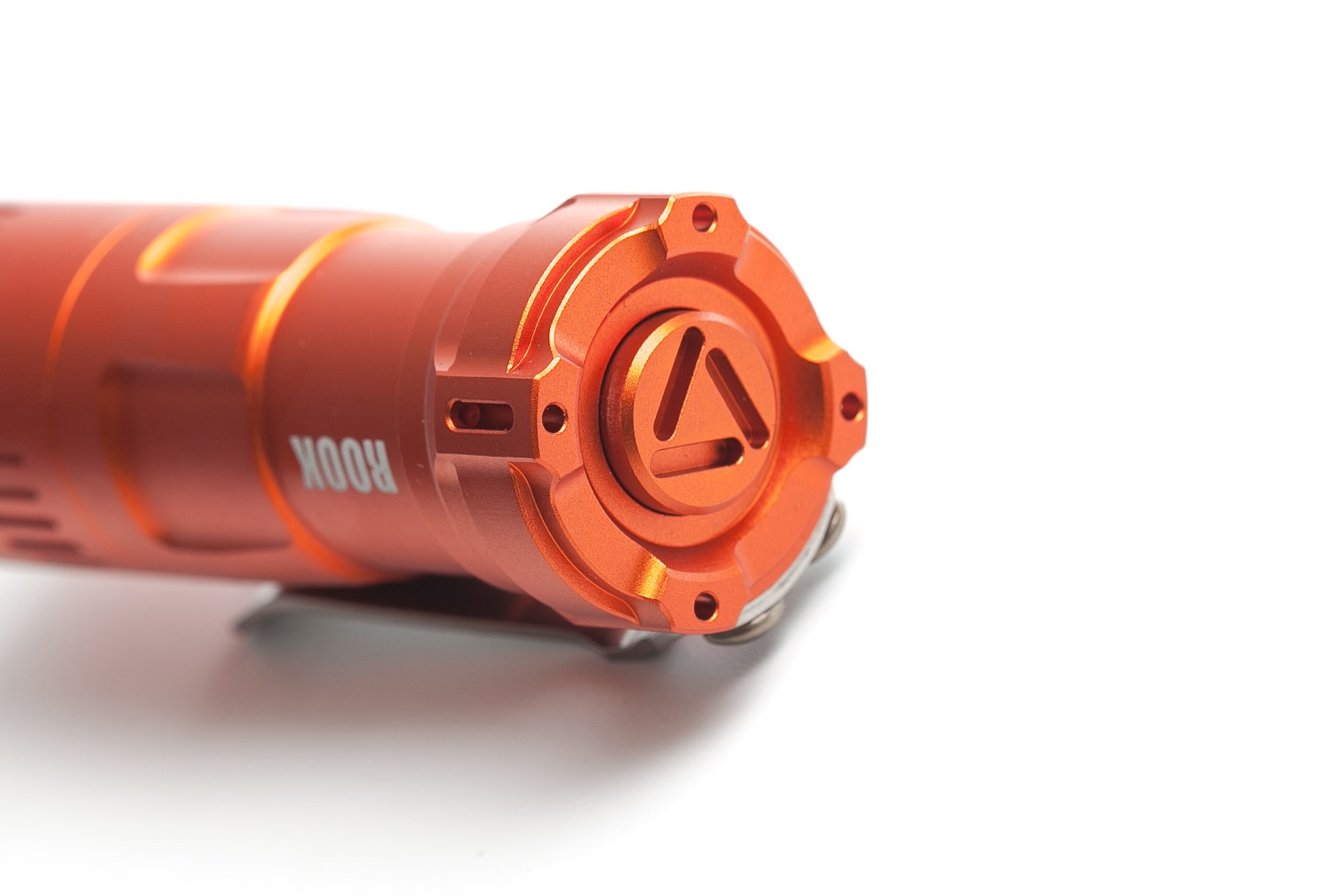
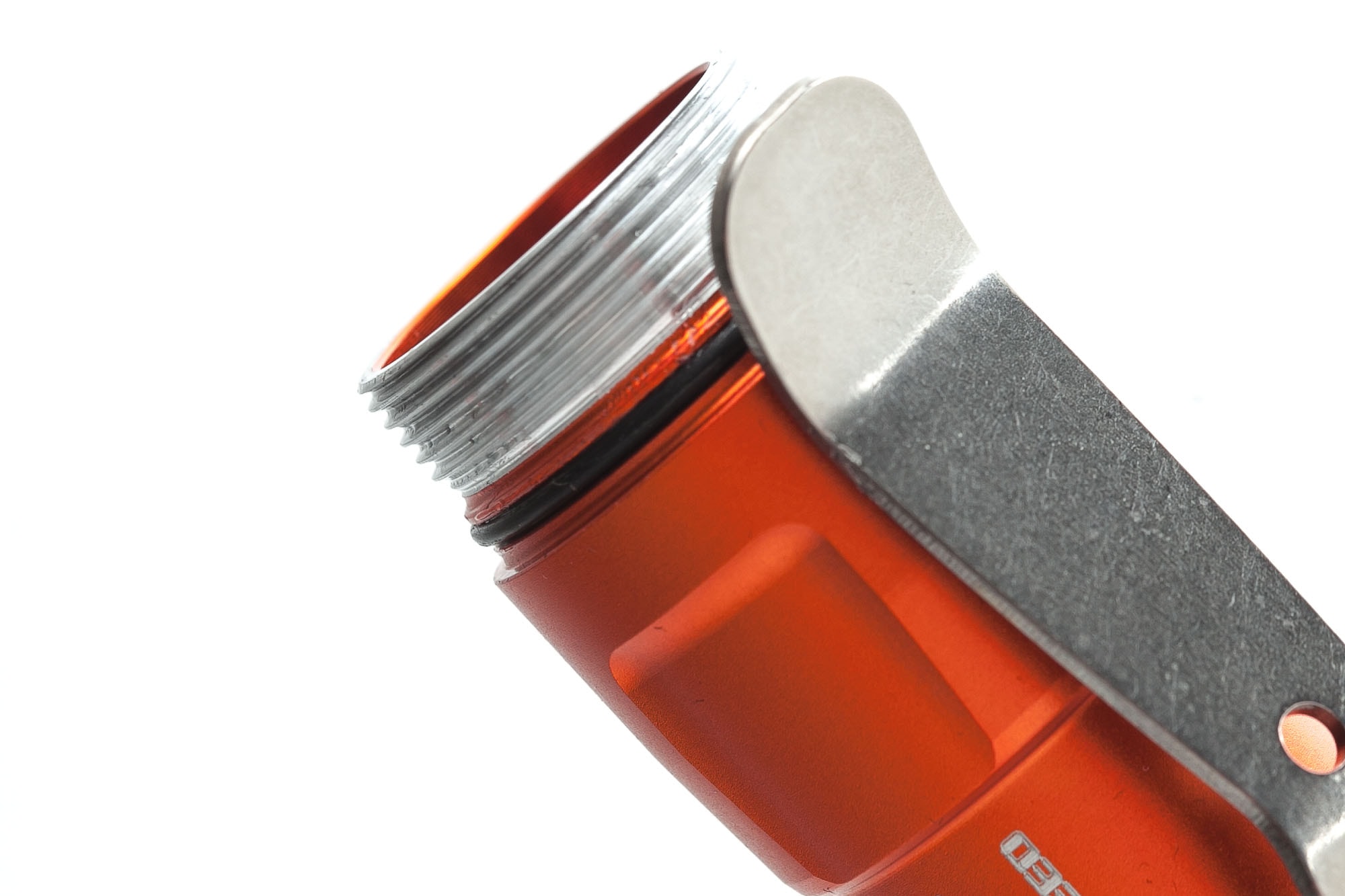
LED, Lens, Bezel, Beam, and Reflector
Okay, I think we have come to the more interesting parts of the review. Many people scroll down to here, and read the reviews, but all the things we mentioned above are also important!
Anyway, we don’t just believe the manufacturer’s numbers and specifications, so we want to test it ourselves.
Vosteed offers the option of either Nichia 519A 4000K (all colored flashlights) and CREE XPL 6000K (only for black and orange).
The one I received for review is the CREE version with cool white light, and the brightest of the 2.
While the Nichia is specced at 1800 lumens, the CREE is specced at 3,000 lumens, but I doubt that from 3 CREE XPL Leds, in this small flashlight, with this small battery, after 30 seconds.
The head is just 1 part, without an actual bezel.
Looking inside from the front, you see a triple TIR optic, protected by a glass lens. This is great because TIR optics are more sensitive than glass, and therefore damage/scratch easier.
The beam is pretty smooth, but looks very cold, almost blue. But let’s see what the Spectromet has to say. I used the Asensetek Lighting Passport Pro Standard for this.
Below are the results taken from about 5 meters if I remember it correctly.
Highest mode:
- CCT: 7109K
- CRI Ra : 72
- Duv: -0.0012
Medium mode (I think it’s 20% mode)
- CCT: 7169K
- CRI Ra: 72
- Duv: -0.0007
So, these numbers don’t lie, it does indeed use very cool LEDs.. but cooler than the 6100K it was advertised at.
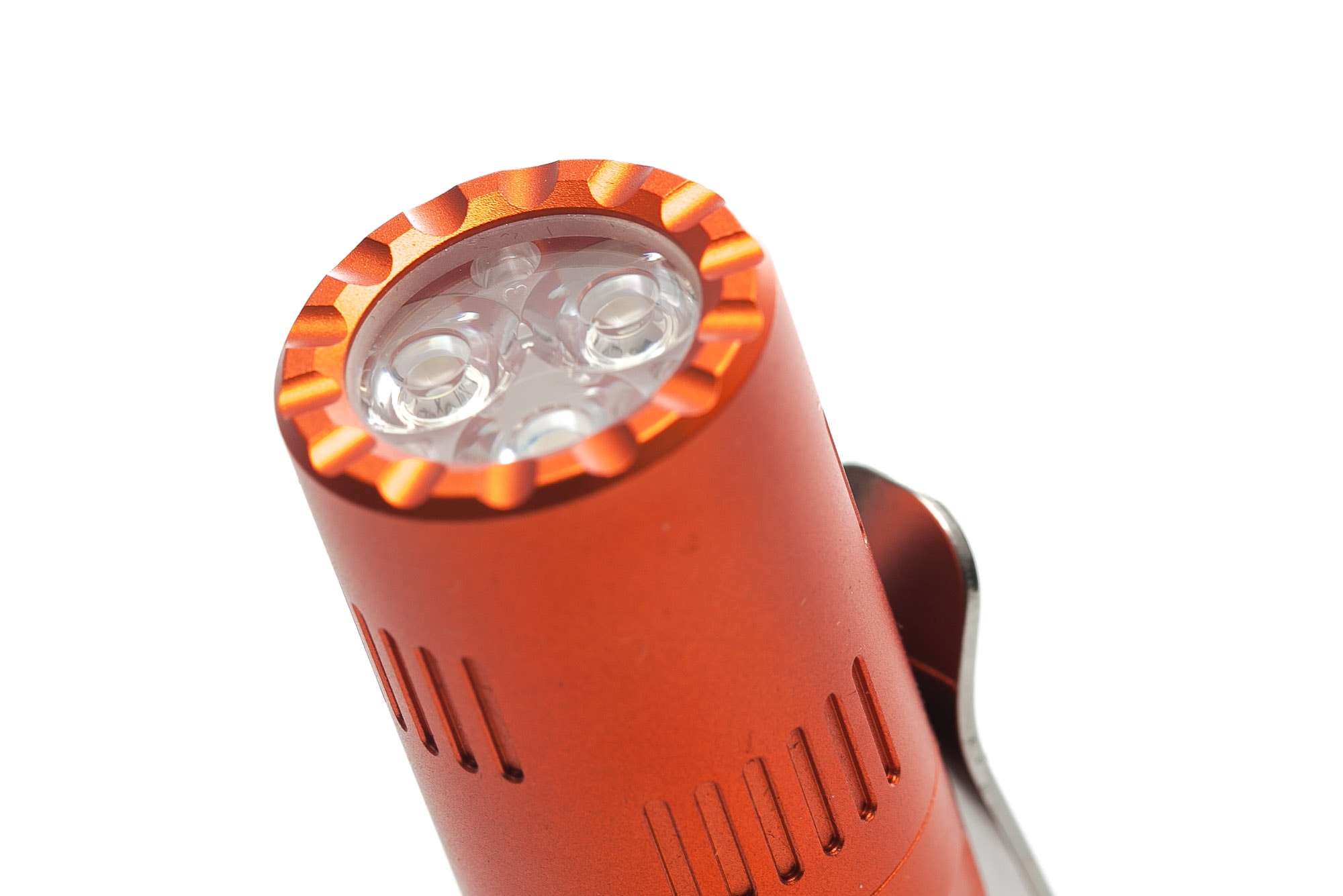
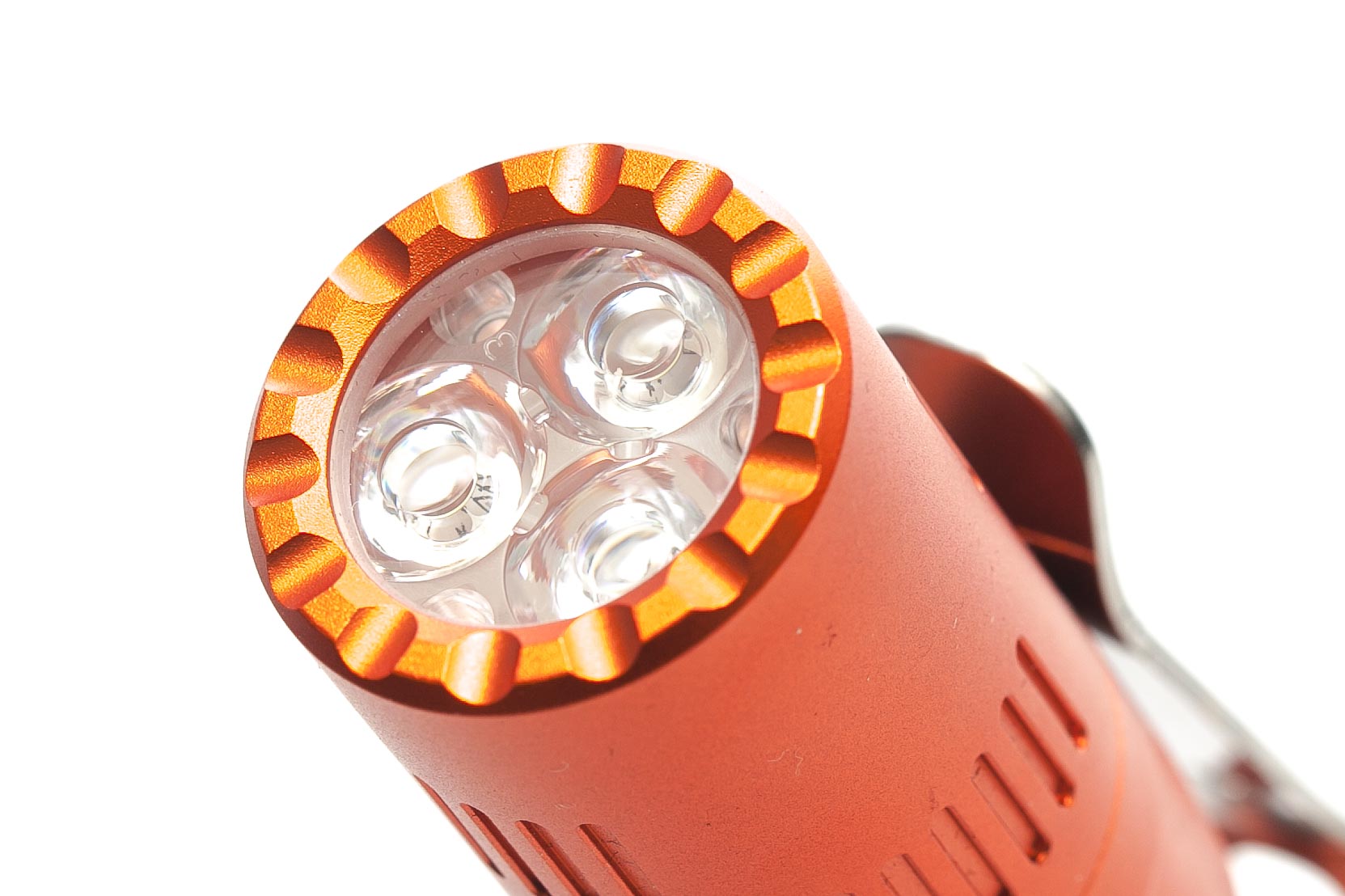
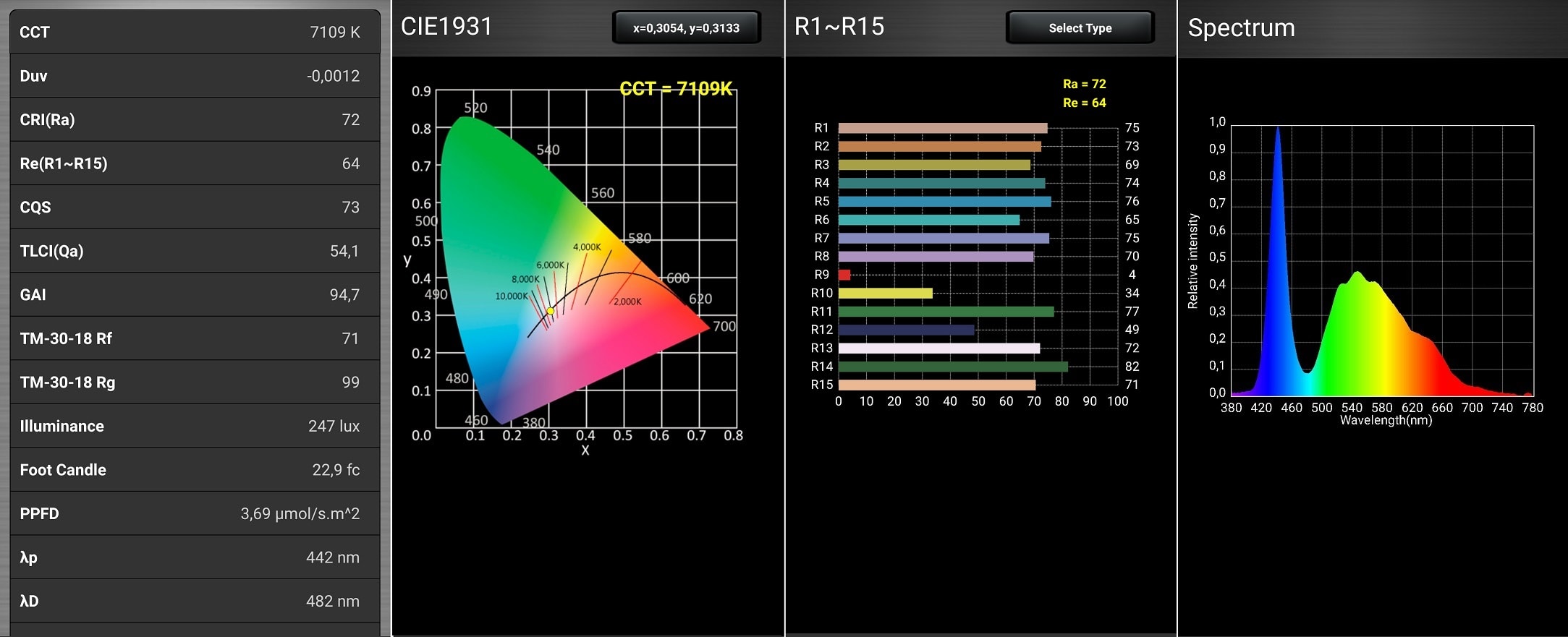
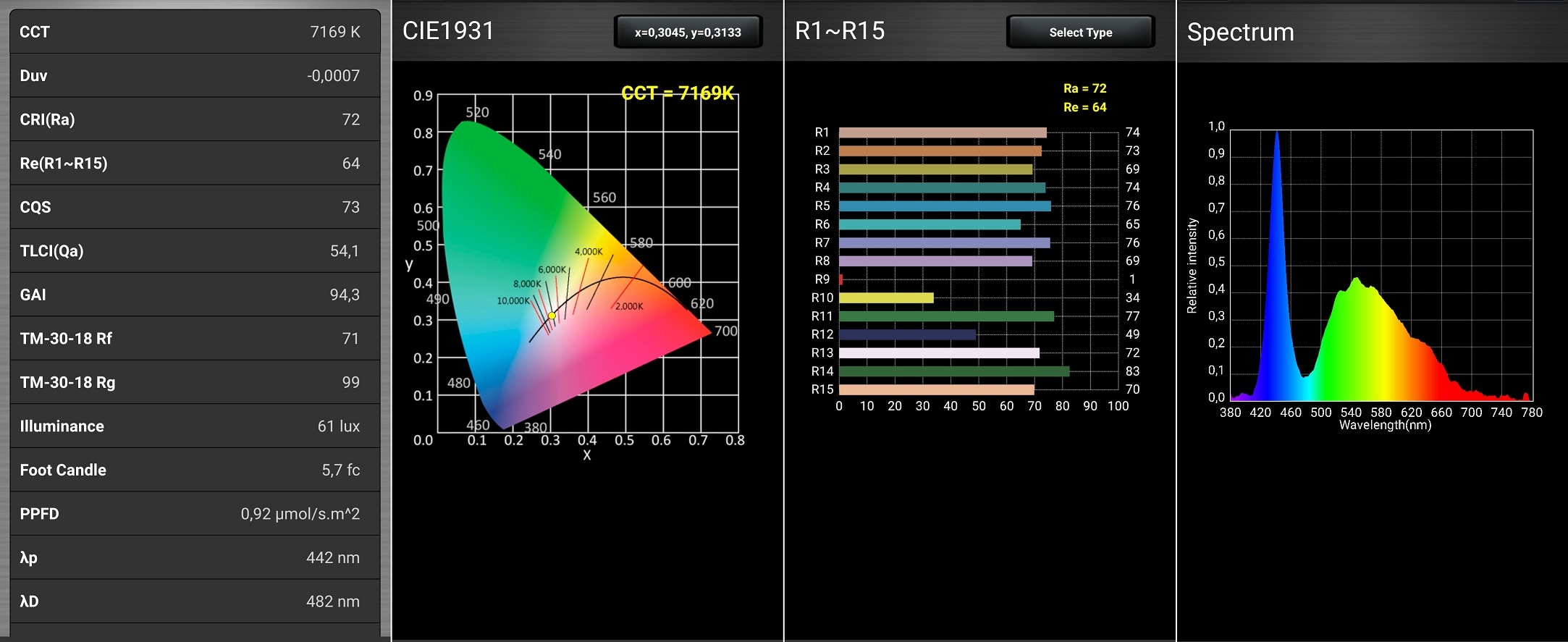
Dimensions and its competition
Dimensions:
| Vosteed Rook | Millimeters | Inches |
|---|---|---|
| Length | 81 mm | 3.2 in |
| Head diameter | 24mm | 0.9 in |
| Body diameter narrowest | 21mm | 0.8 in |
Dimensions are rounded to the nearest millimeter, and to the nearest tenth of an Inch.
Weight:
| Vosteed Rook | Weight in grams | Weight in oz. |
|---|---|---|
| Without battery: | 58 g | 2 oz |
| With battery | 84 g | 2.9 oz |
Weight is rounded to the nearest gram, and to the nearest tenth of an Oz.
Vosteed Rook Flashlight comparison
Size compared to other Reylight EDC flashlights
Group 1, from left to right: Reylight Pineapple Mini Ti, Vosteed Rook, Reylight Krystal, Reylight Dawn, Reylight Pineapple v4
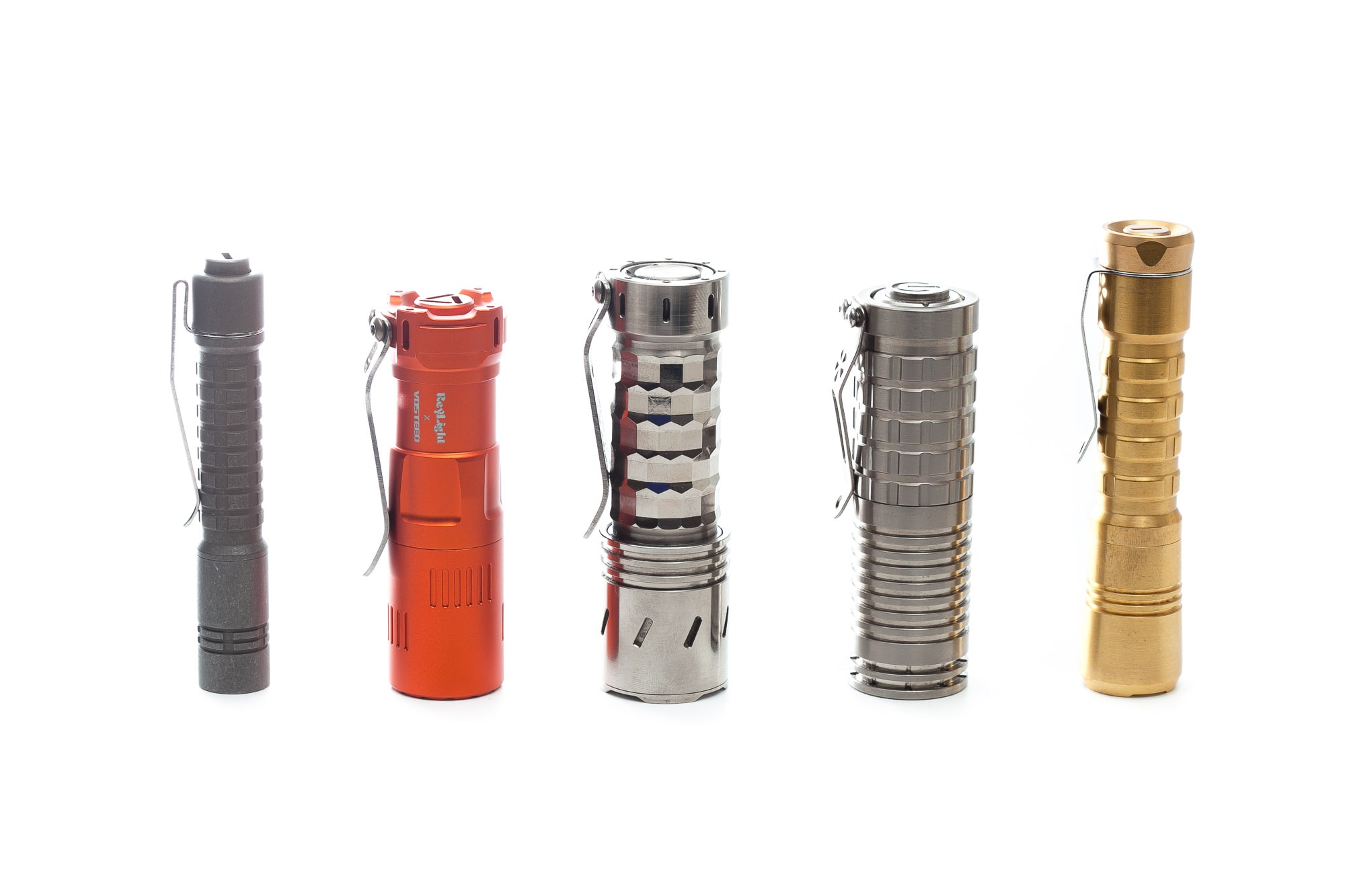
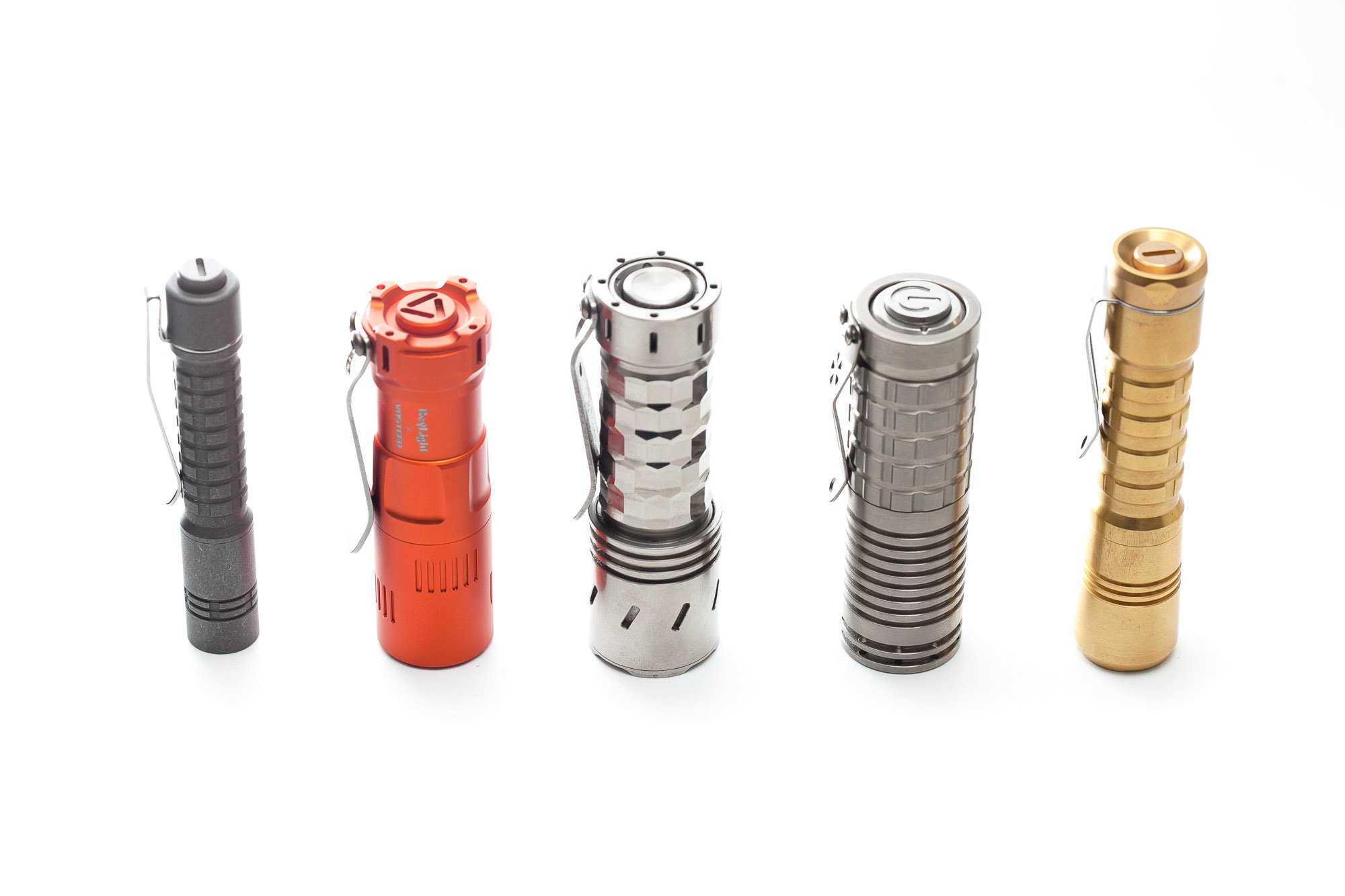
Vosteed Rook UI : User interface and driver
The Rook gives a few interesting options to choose from. Its UI is not as sophisticated as Anduril, but it’s more advanced than most people probably need. But the first time using the configuration mode might be a bit confusing. So please read the following carefully. I will start by going through the default usage. And then get into the programmable features.
It’s using a reverse-clicky switch, so you have to turn it on, before you can change modes.
The available main modes:
- You get 4 modes: moonlight, 2%, 20%, 100% (we could call this Moon, Low, Medium, and High)
The available special modes (blinkies):
- Not in the default mode group. (Strobe and SOS are only available in mode group 4)
How the UI works when the flashlight is still turned OFF:
- Half-press: nothing
- Single-click: Moonlight*
*Moonlight is activated by default, but you can turn it off in the configuration mode, therefore it is between brackets in the manual…. since it can be deactivated
How the UI works when the flashlight is turned ON:
- Half-press: Cycle through the menu from Moon to High
- Single-click: turns off
- Double tap: turbo
Shortcuts within the standard UI:
- To Turbo: double tap from On
- To Moon: 1 click from Off
- To Strobe: N/A
Mode memory:
- Not activated by default. It will always start in Moon mode
- However, in configuration mode, you can turn mode memory on, so you can return to the last used mode after the light is turned off.
Blinky modes:
- Not available in default mode configuration.
- However, in configuration mode, you can change to Mode Group 4, which includes SOS and Strobe.. which are kind of useless in a normal mode configuration in my opinion.
Low battery warning:
- Output reduces, but there is no real warning. It turns off when the battery reads about 2.88V.
Lock-out mode:
- None, but there is a mechanical switch, so it is not really necessary
PWM:
- Not visible by eye.
Vosteed Rook Configuration Mode
The Vosteed Rook has several configuration settings.
Mode groups
First of all, you have the option to choose from 4 different Mode Groups in Configuration mode 1.
Group 1: (moonlight) – 2% – 20% – 100%
Group 2: (moonlight) – 10% – 40% – 100%
Group 3: (moonlight) – 2% – 10% – 50%
Group 4: (moonlight) – 50% – 100% – strobe – SOS
To select any of these 4 groups you have to do the following. You first need to enter the Group Selection Menu before you can select the Mode Group!
So those are 2 separate things.
Also note that you have to Half Tap to enter the Group Selection Menu, and not doing a full on/off click.
You probably need to practice this a bit to make it work well.
- Turn the light on
- Tap the switch at least 8 times (you will notice that the light will stop responding)
- Now you will see 1 blink + quick flashes, 2 blinks + quick flashes, 3 blinks + quick flashes etc.
- Be careful! You have to half-tap the switch when it is flashing quickly after the first blink to enter Mode Group Selection. Then you can select the mode group!
At first, I thought that I had to wait for the 3 blinks + flashes to change to Mode Group 3, and for the 4 blinks to Mode Group 4.
No!
You first need to activate the Mode Group Selection with a half tap after the first blink!
Then you will see 4 slow blinks in a row (unlike Biscotti firmware or Convoy configuration which will blink 1 time, and flash, 2 blinks and flash etc). And you have to Half-Tap the switch again at the 1st, 2nd, 3rd or 4th blink to select that mode group.
(Since this is different from Convoy configuration menu, you might get confused, like me.. so be careful, that you first have to half tap after the first blink in the Configuration mode, to enter Mode Group Selection before you can select 1 of the 4 mode groups)
Mode Memory (on/off)
When you enter the Configuration Mode, you can activate/deactivate Mode Memory to tap the switch after the 2nd blink. Here’s how to do it:
- Turn the light on
- Tap the switch at least 8 times (you will notice that the light will stop responding)
- Wait till you see 2 blinks + quick flashes, and tap the switch when you see the quick flashes.
- That’s it
Moonlight Mode On/Off
By default, (Moonlight) mode is activated. But in case you don’t want moon mode, you can deactivate it. That’s why Moonlight is in brackes in the manual.
- Turn the light on
- Tap the switch at least 8 times (you will notice that the light will stop responding)
- Wait till you see 3 blinks + quick flashes, and tap the switch when you see the quick flashes
Mode order toggle (From High to Low, instead of Low to High)
- Turn the light on
- Tap the switch at least 8 times (you will notice that the light will stop responding)
- Wait till you see 4 blinks + quick flashes, and tap the switch when you see the quick flashes
Factory Reset
Okay, so you did something wrong, but you don’t know how to resolve this? Use the Factory Reset option. It’s relatively easy to bring your flashlight back to the factory state.
- Turn the light on
- Tap the switch at least 8 times (you will notice that the light will stop responding)
- Wait till you see 5 blinks + quick flashes, and tap the switch when you see the quick flashes
Summary:
Instead of 8 taps, I would like something like 20 taps or so. Maybe it’s just me, but I often count the number of modes a flashlight has.. by just tapping/clicking and counting.
That way, I am more confident I’m actually using the correct configuration.
But since the standard mode group has 4 modes, I will count 4 times, and again 4 times.. but now I accidentally entered Configuration mode. I might be a little strange in this, but that’s something I would probably change.
Vosteed Rook charging and batteries
The Vosteed Rook uses a single 18350 battery (which is included).
Just note that you need to remove the battery isolator before you can use the Rook.
The included battery is a 18350 with 1100mAh, and USB-C charging port. And that’s a benefit, so you don’t have to get a separate charger. It has a button top, but you can also use flat tops, non protected, because there are springs on both ends.
And even when violently shaking the light, the included battery doesn’t rattle, so that means it’s a good fit.
There is no on-board charging! But charging is done directly to the USB port of the battery itself.
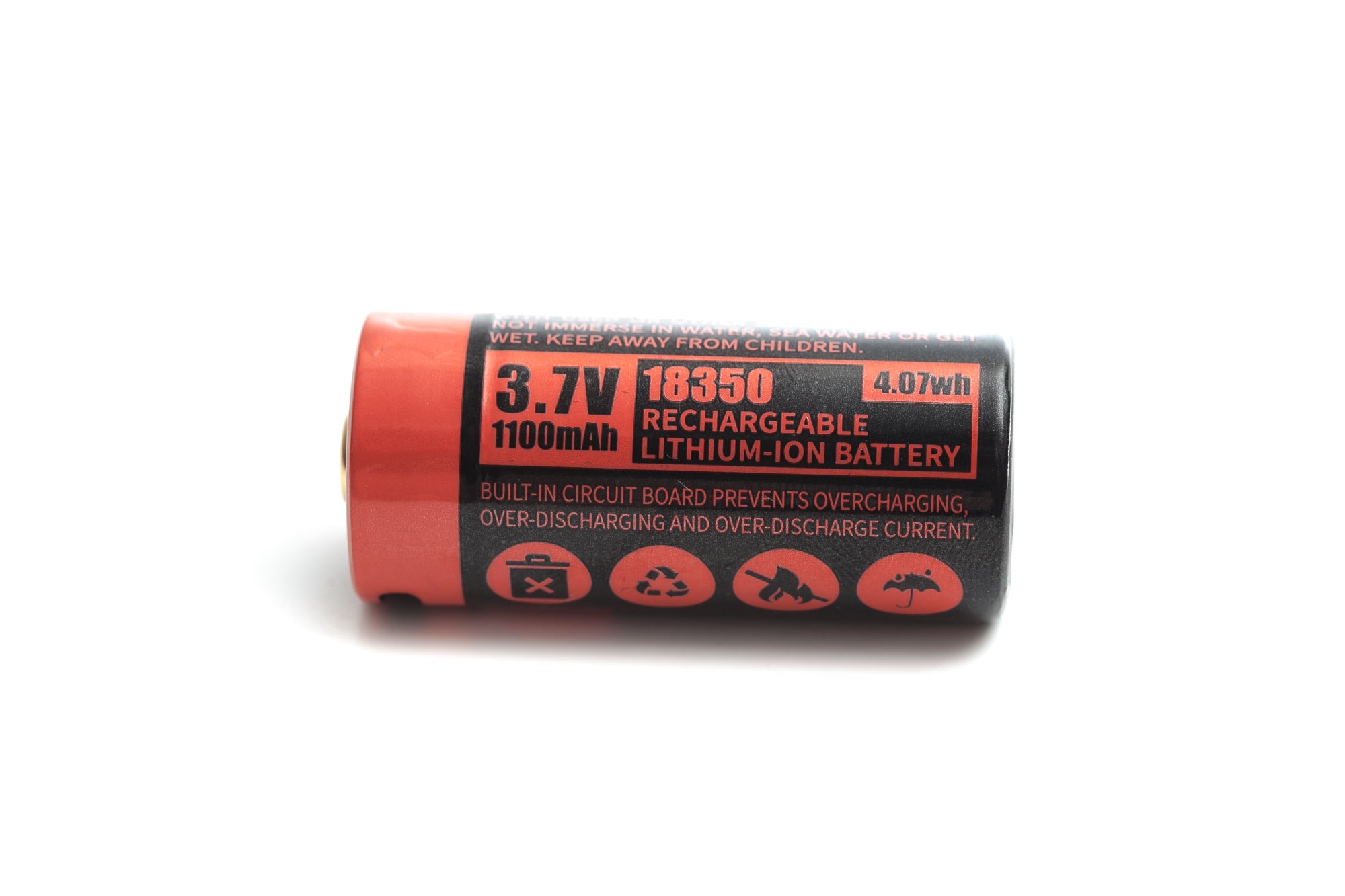
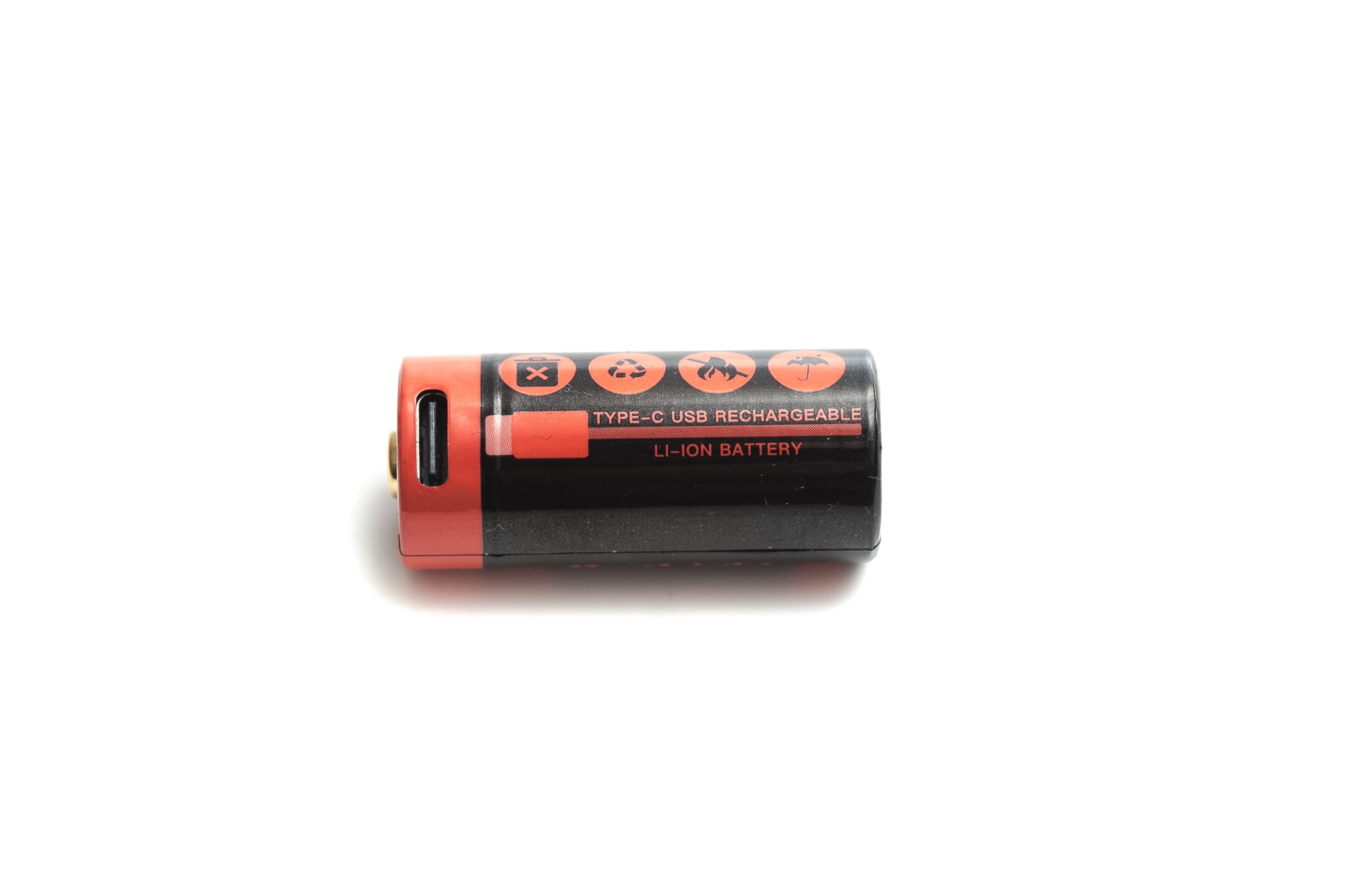
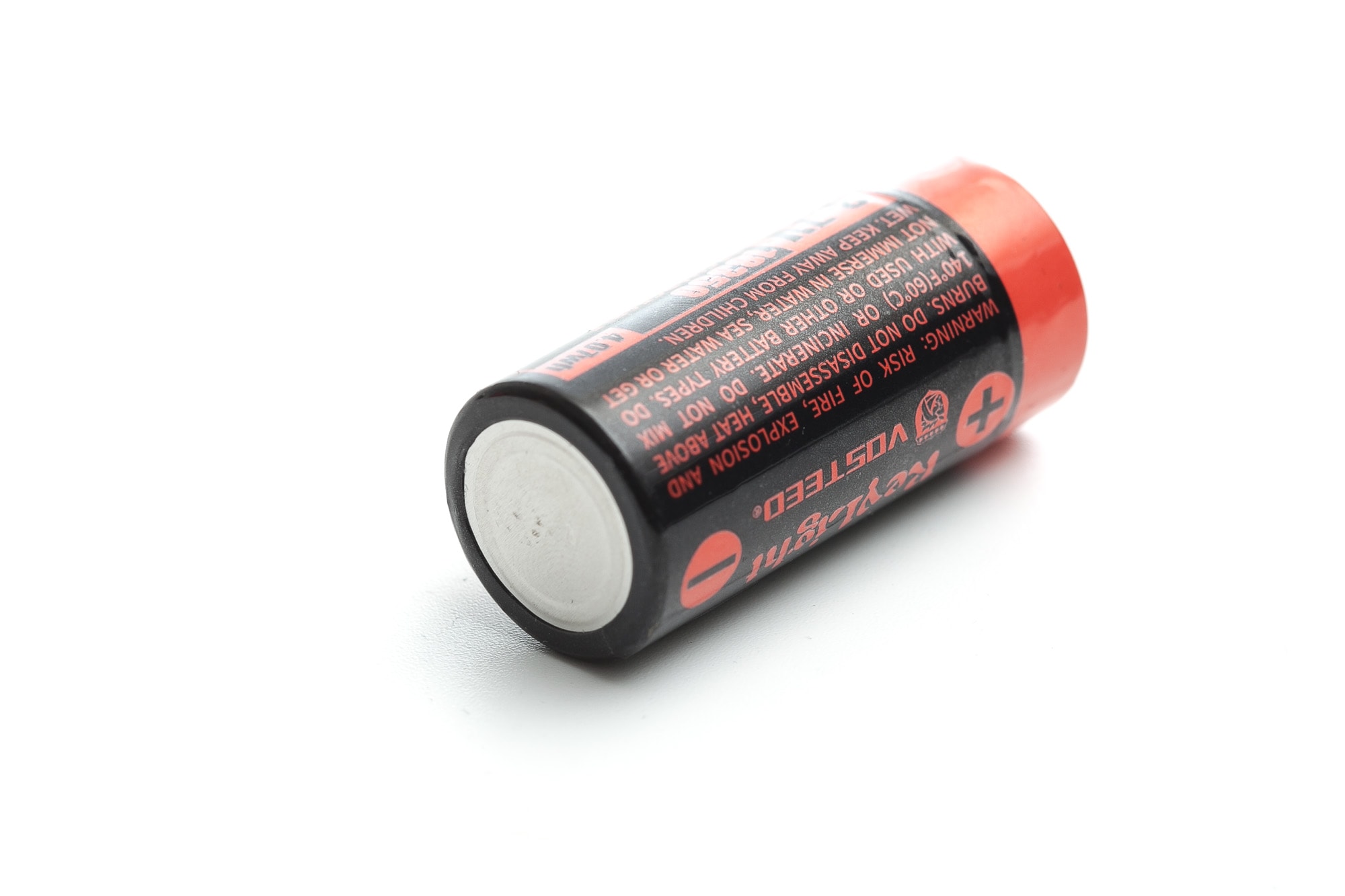
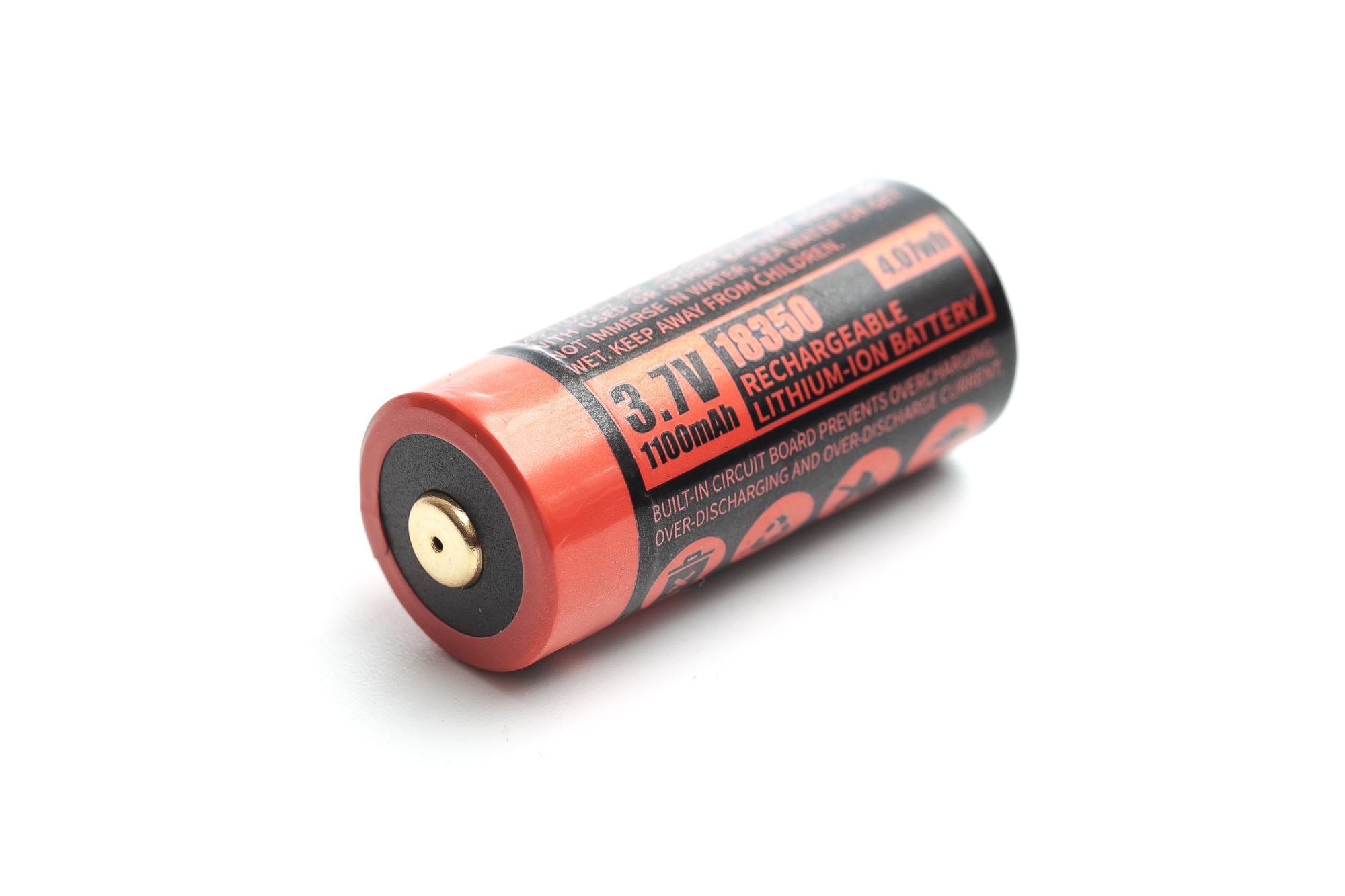
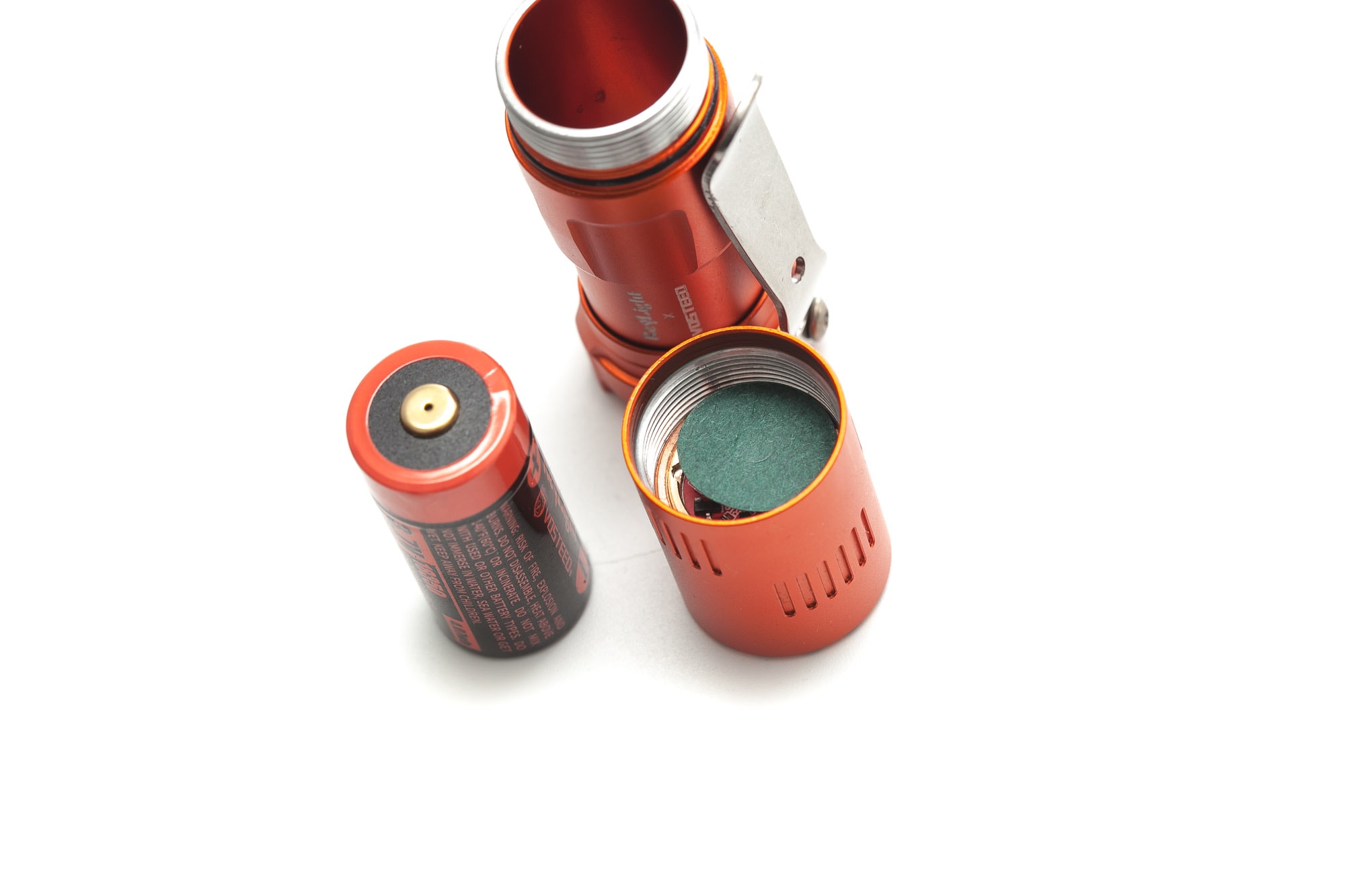
Performance test
This is the gear I used for testing:
| Gear | Purpose | Link to buy |
|---|---|---|
| Hagner E4-X | Measuring beam intensity (throw) | Inquire at Hagner.se |
| Extech SDL400 | Lumens and logging runtimes | Amazon.com, Amazon.co.uk, |
| Leica Disto D2 | Distance for throw measurements | Amazon.com, Amazon.co.uk, |
| Asensetek Lighting Passport Pro Standard | Spectrometer for LED measurements | – |
Lumen measurements:
The output measurements in this review are based on my homemade integrating spheres, each equipped with an Extech SDL400 Lux Meter. For consistency and accuracy, a calibration light (Convoy S2+ with 249lm and a Convoy S2+ with 261lm) is measured prior to each set of lumen measurements.
For high-output lights, one of the lux meters uses an ND camera filter to prevent the lux meter to max out. This is either the Kenko PRO1D ND16 up till about 80,000 lumens or Gobe ND32 for anything above.
All of my readings were taken from a fully-charged Vosteed 18350 with 1100mAh.
The measurements were taken manually at turn on and 30 seconds. The 10 minute numbers are taken from the runtime graph.
btw. I had a hard time figuring out what modes I was having, for the test. This was before I understood how the configuration mode worked. So I am not 100% sure the lower modes are the ones listed below, but I am pretty sure this is the default mode group.
An since I have the CREE XPL version, it’s rated at 3,000 lumens.
| Mode | Specified | at turn on | 30 sec | 10 minutes |
|---|---|---|---|---|
| Moon | – | 1 | 1 | – |
| 2% | – | 64 | 63 | 62 |
| 20% | – | 347 | 388 | 384 |
| 100% | 3,000 lm | 1639 lm | 1545 lm | 305 lm |
| 100% at 3.6V | – | 1151 lm | 1036 lm | – |
I try to use rounded lumen numbers, except for maybe Low or Moonlight/Firefly modes. I haven’t done a runtime test in Moon mode. The last row shows the measurements with a battery at around 3.6V, to see if the highest mode can be activated. And as you can see, it can, but not reaching the maximum possible output.
BTW. High mode wasn’t even close to advertised, even though 1500 lumens isn’t bad..
Vosteed Rook battery life and runtime
The runtime test was done with the 50cm home made integrating sphere, combined with the Extech SDL400 data logging Lux Meter.
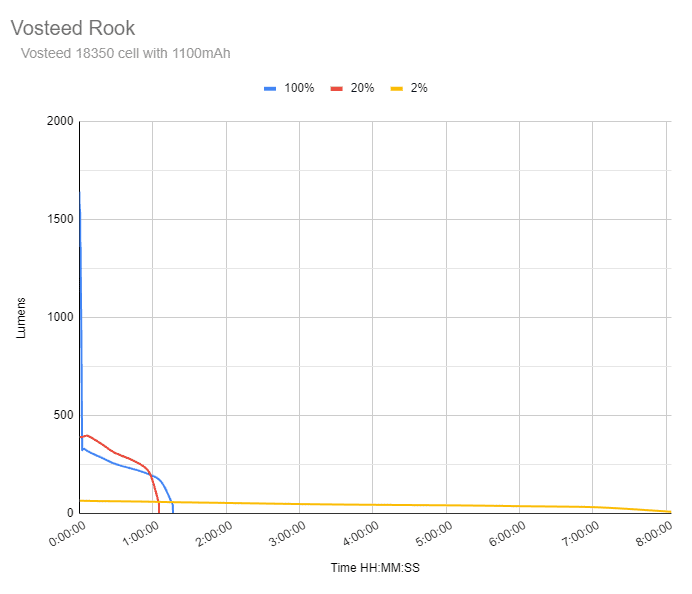
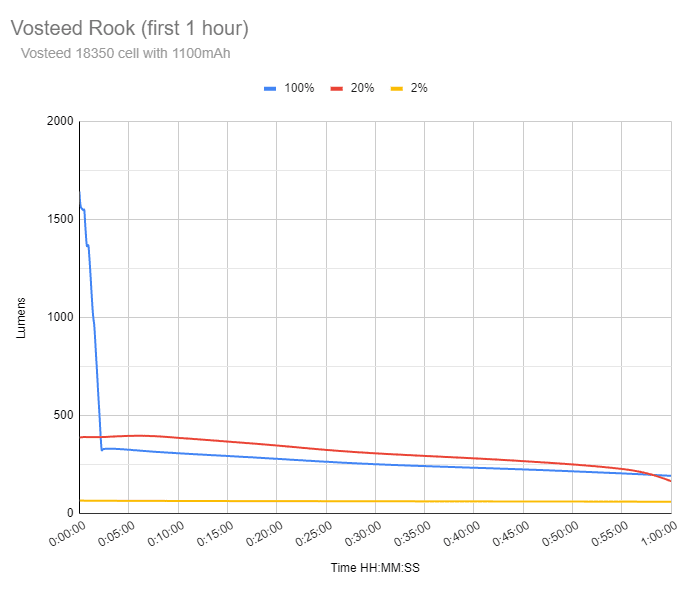
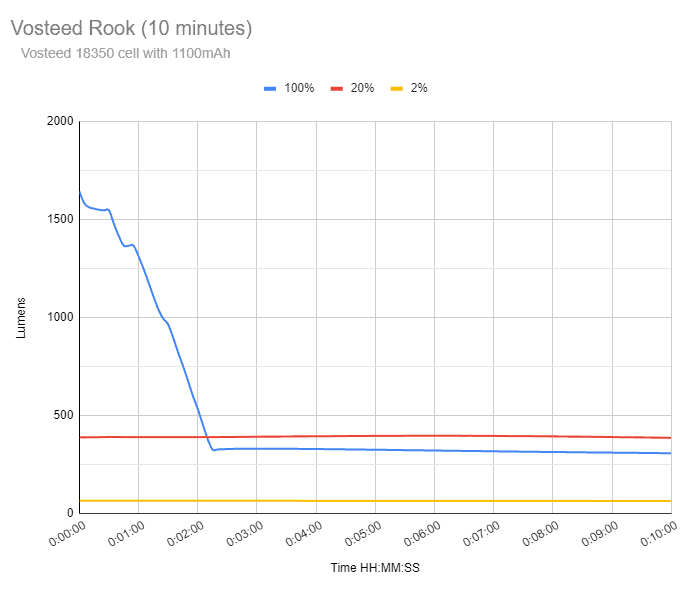
| Mode | Specified | Measured runtime (ANSI FL1) | Time till shut off |
|---|---|---|---|
| Moon | ? | – | – |
| 2% | ? | 8h 04min | 8h 04min |
| 20% | ? | 1h 05min | 1h 05min |
| 100% | ? | 1h 06min | 1h 16min |
Runtimes are pretty short, even at 2%.
About ANSI FL1 standards: The runtime is measured until the light drops to 10% of its initial output (30 seconds after turning on). This does not mean that the flashlight is not usable anymore. The last column shows how long the light actually works till it shuts off. If there is a + symbol, it means that the test was stopped at that particular point, but the light was actually still running. This happens on certain occasions, with certain drivers, firmware, or batteries.
Vosteed Rook Peak beam intensity and beam distance measurements
Measurements were taken indoors with a Hagner E4-X Lux Meter.
| Mode | Specs | Candela measured | Meters | Yards |
|---|---|---|---|---|
| Moon | – | 0 | 0 | 0 |
| 2% | – | 250 | 32 m | 35 yd |
| 20% | – | 1,450 | 76 m | 83 yd |
| 100% | – | 6,300 cd | 159 m | 174 yd |
About peak beam intensity: Peak beam distance according to ANSI FL1 standards: The calculated value of distance in meters at which the flashlight produces a light intensity of 0.25 lux. (0.25 lux is about the brightness of a full moon shining on an object). The columns ‘Meters’ and ‘Yards’ use rounded numbers.
Beamshots
For the following beamshots, I used a Canon EOS 5D Mk2 with a 50mm lens. Manual settings: ISO1600, 1/4sec, F4, 5000K
The shed is about 65 meters / 71 yards away, and the reflective fence about 200 meters.
The following flashlights are compared:
- Vosteed Rook
- Olight Baton 3 Ti
- Wuben X2
- Olight Arkfeld Ti
- Olight Perun Mini
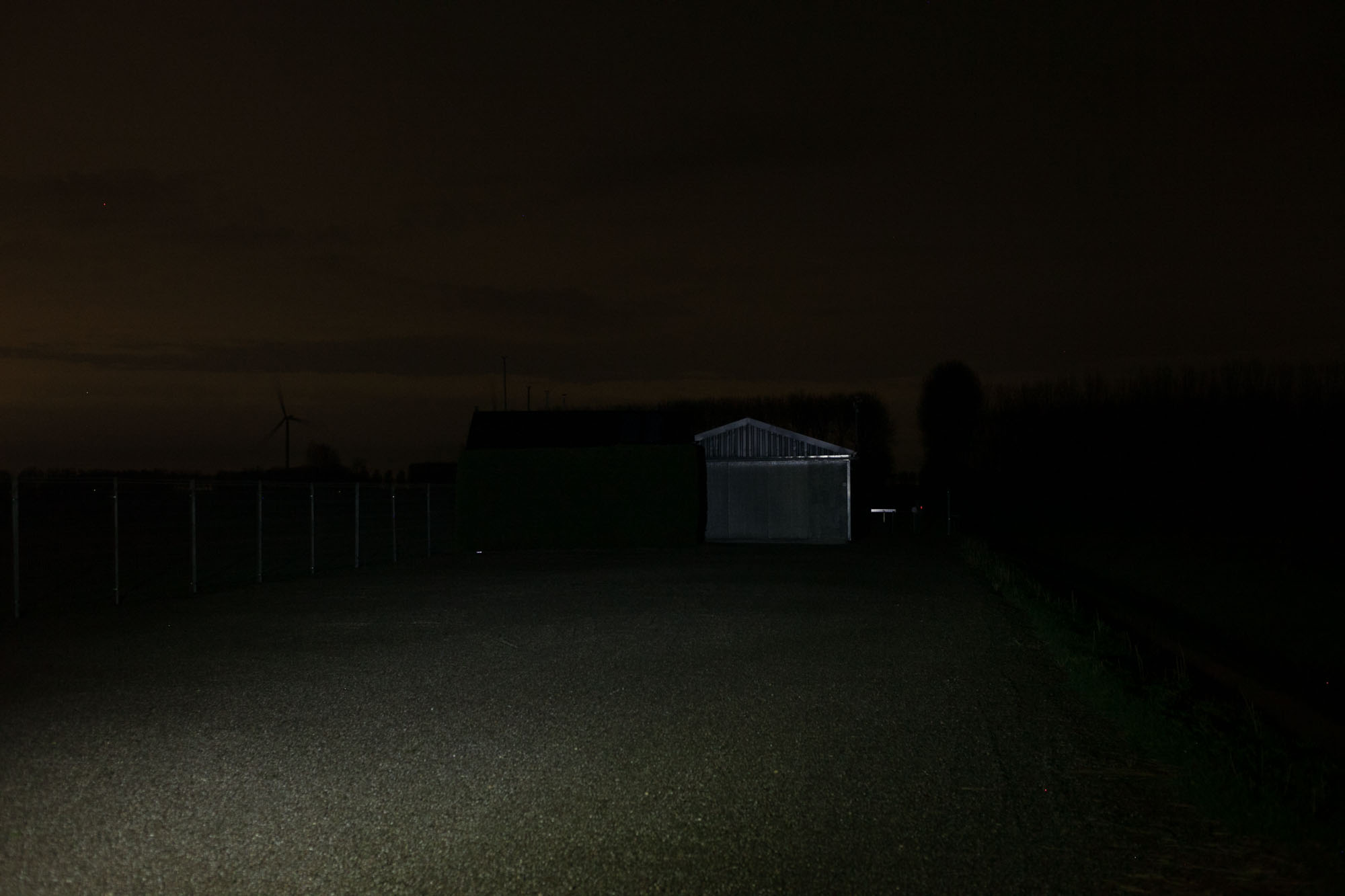
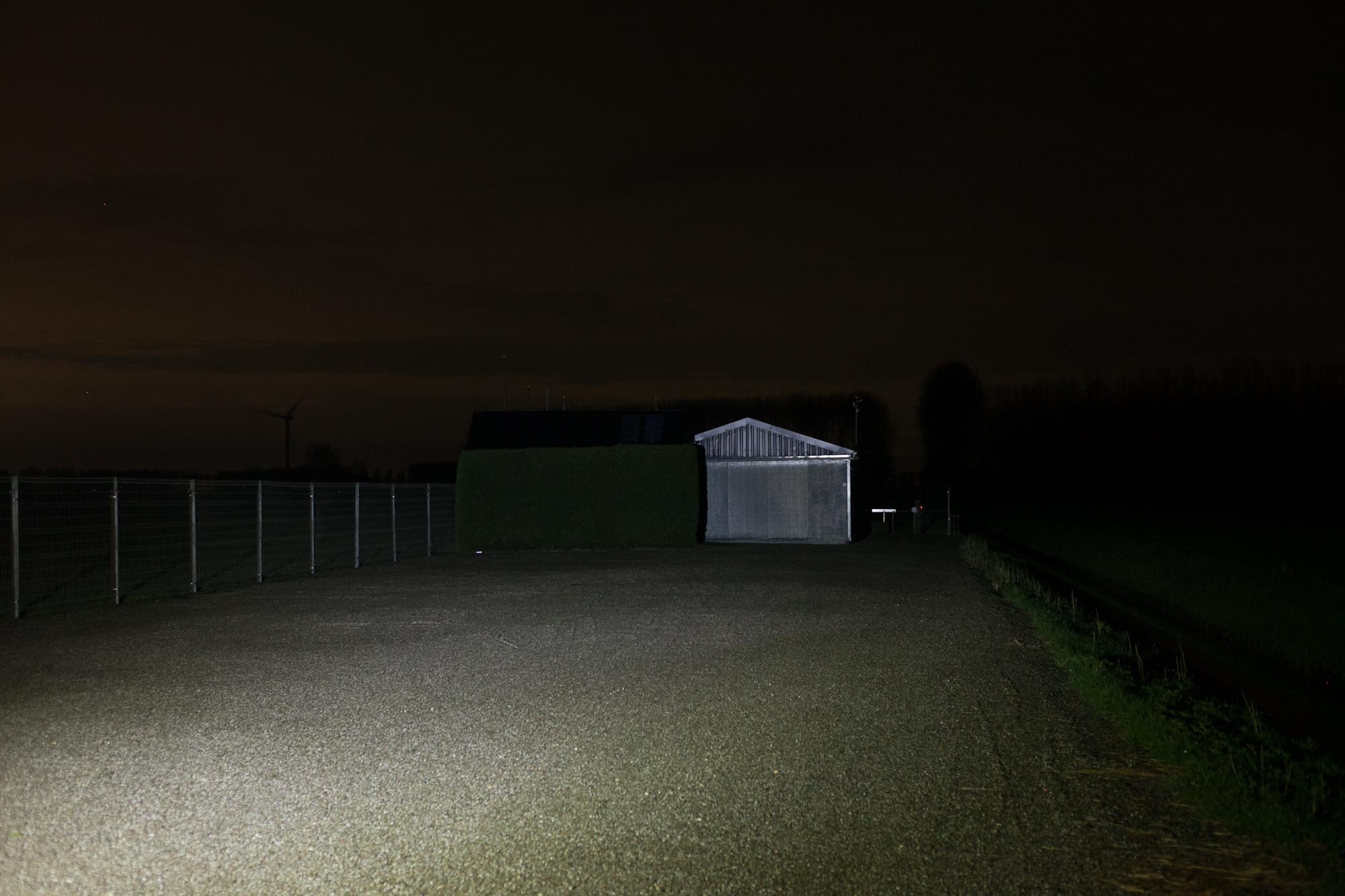
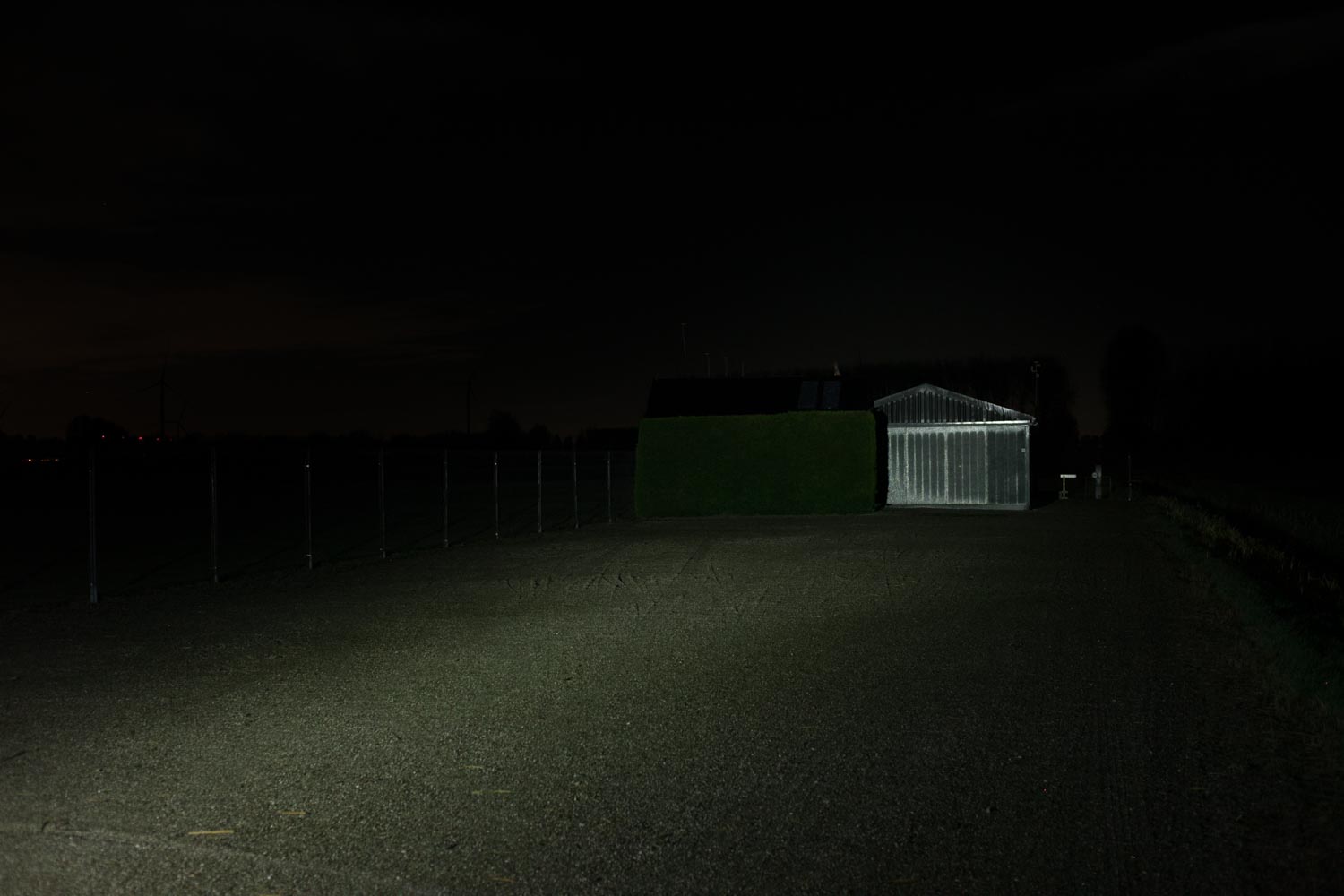
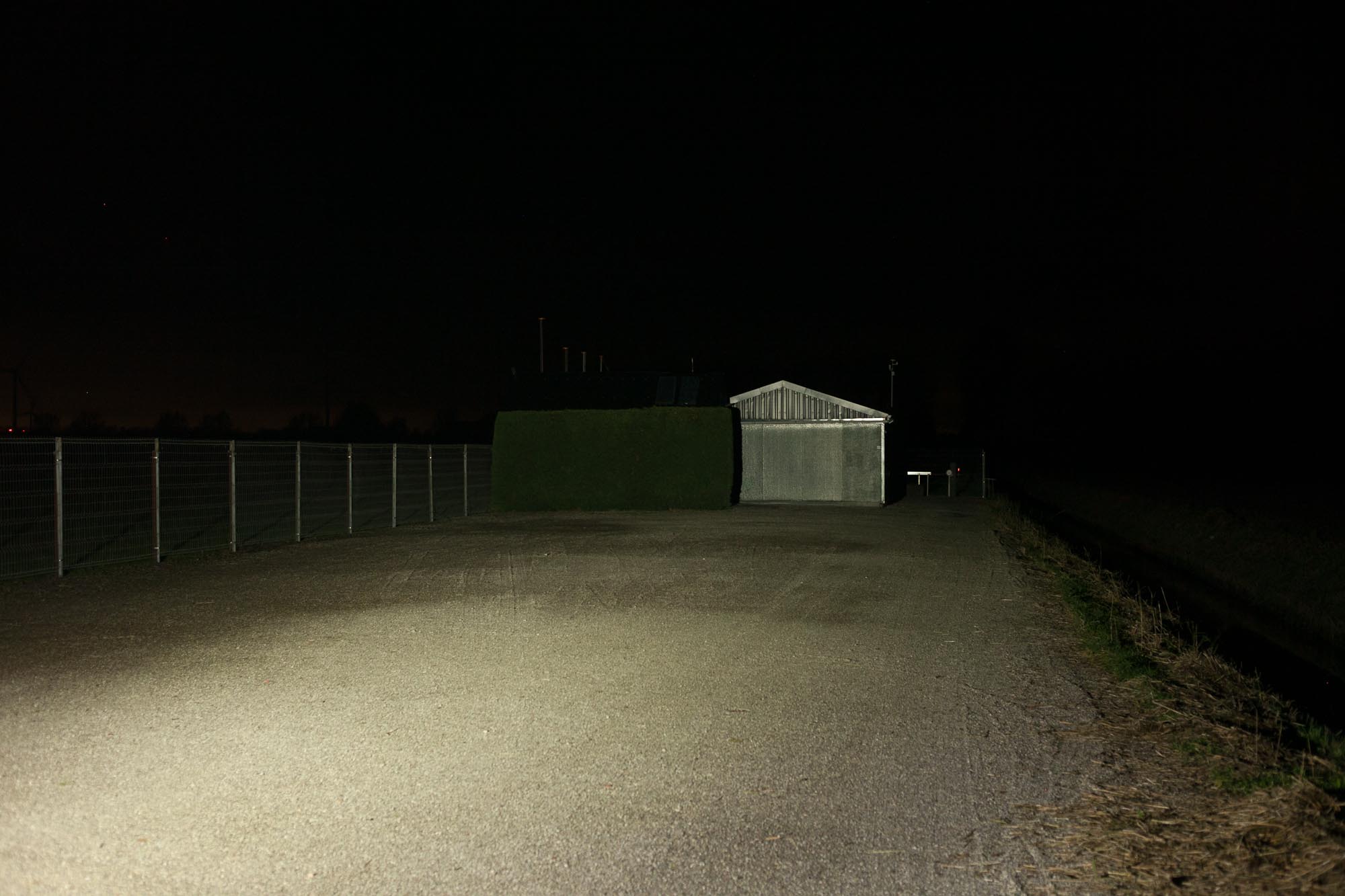
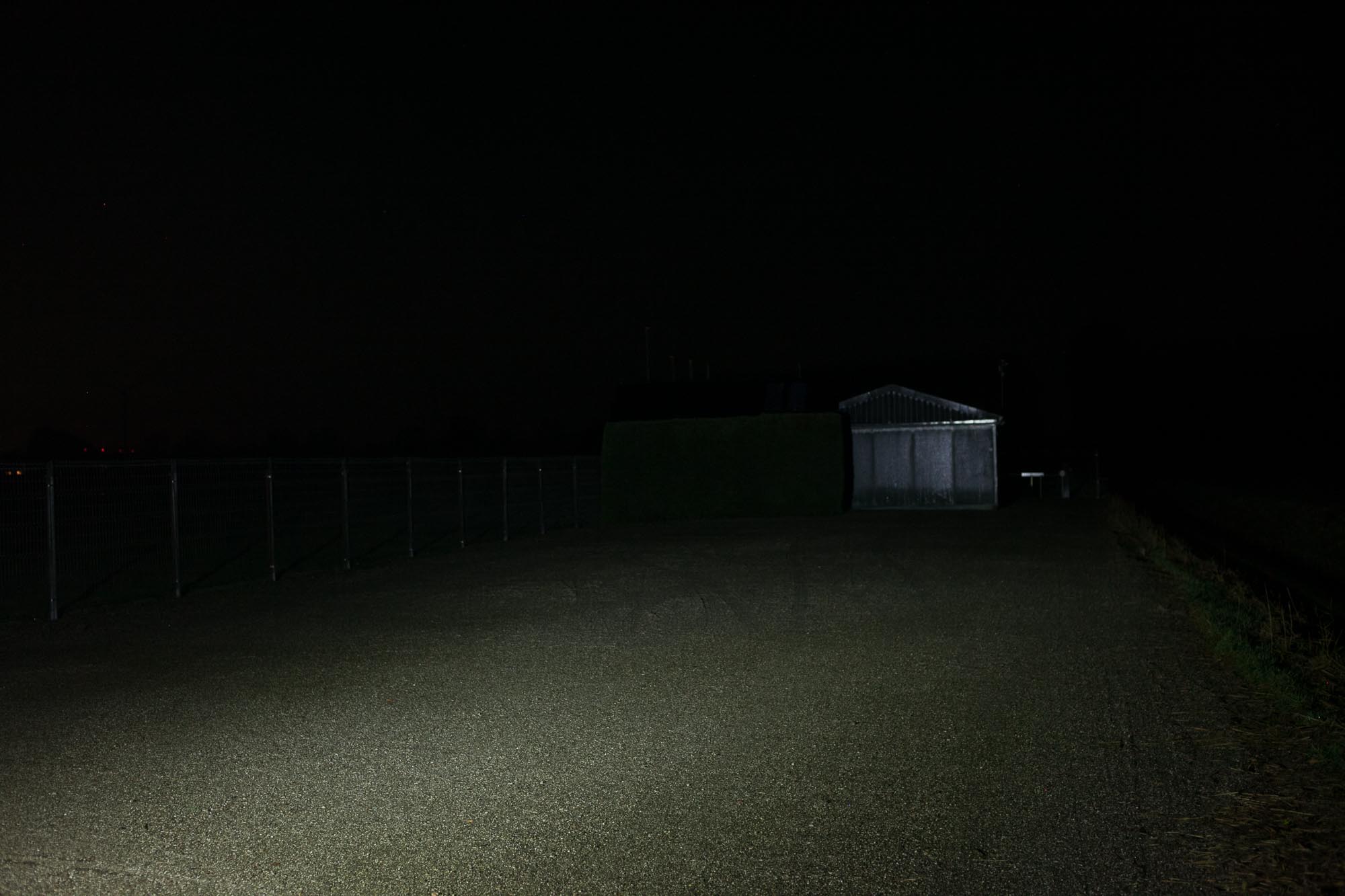
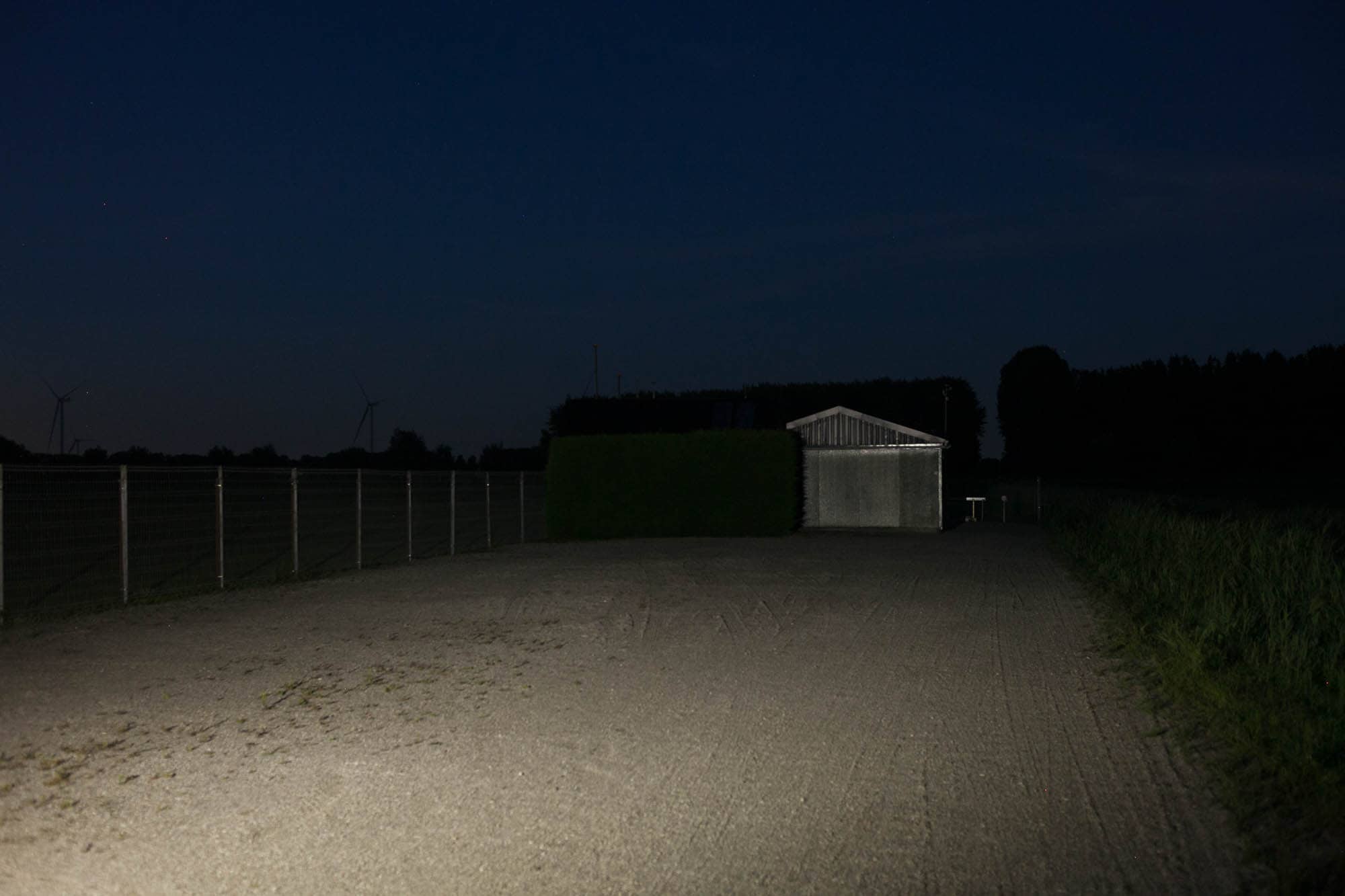
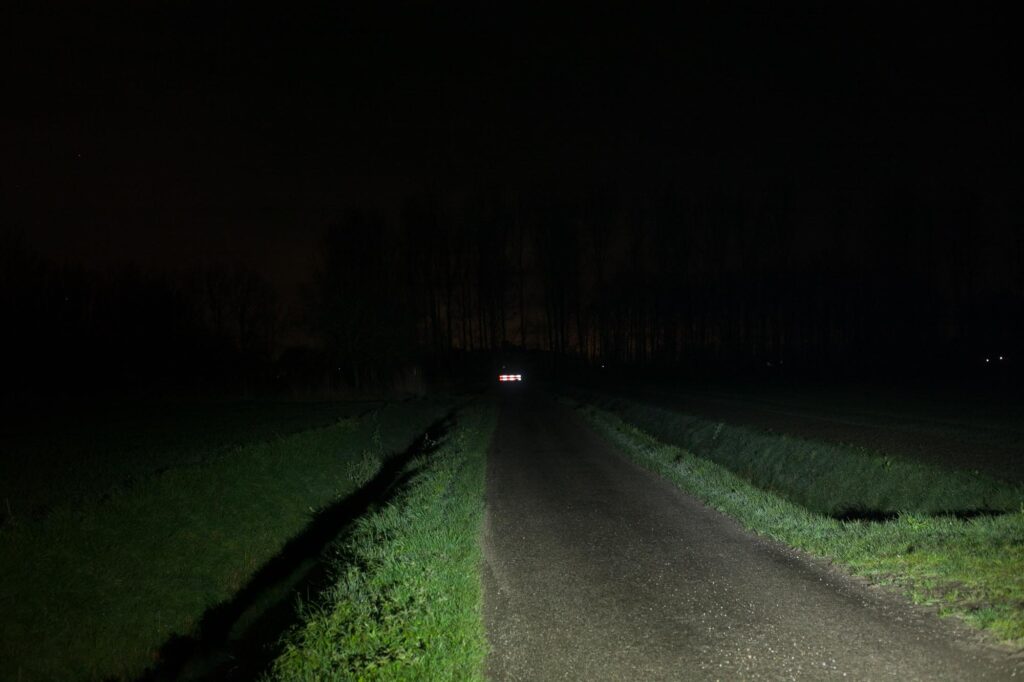
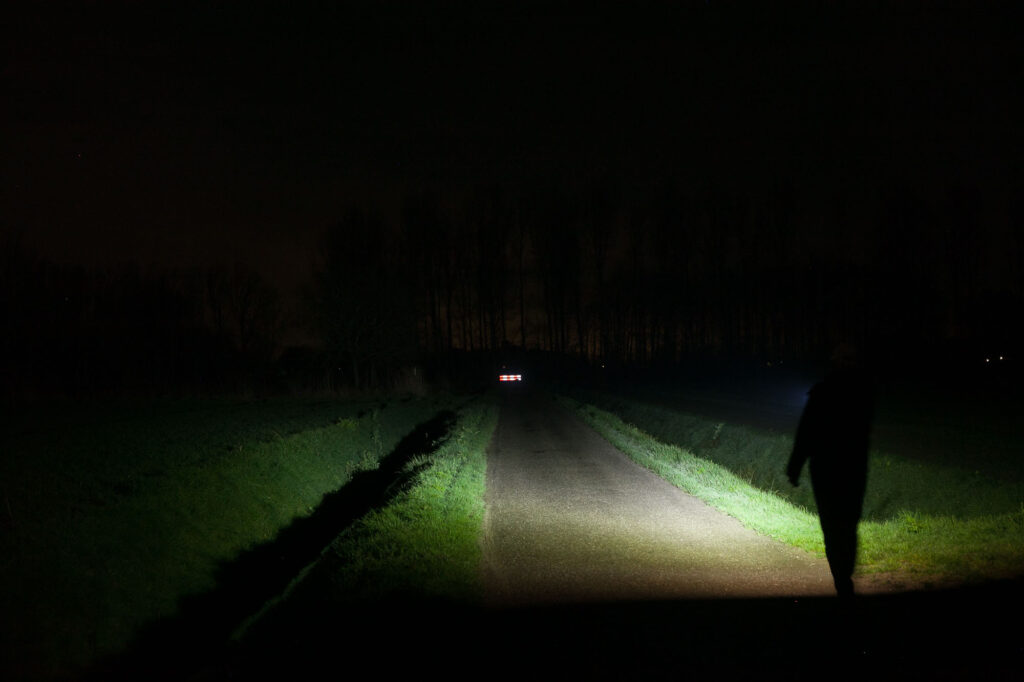
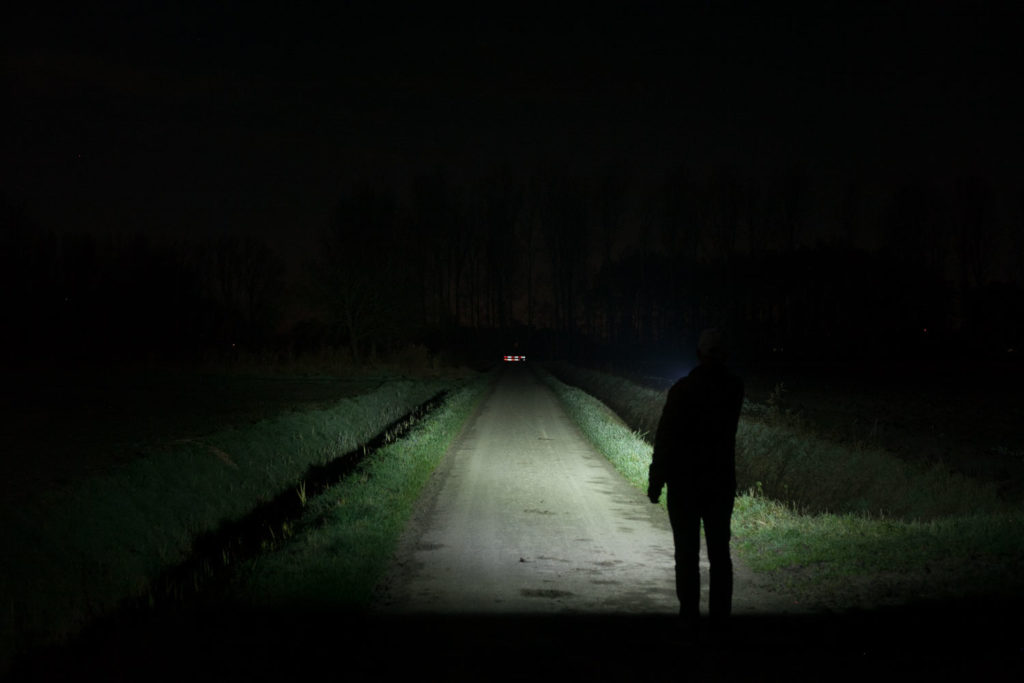
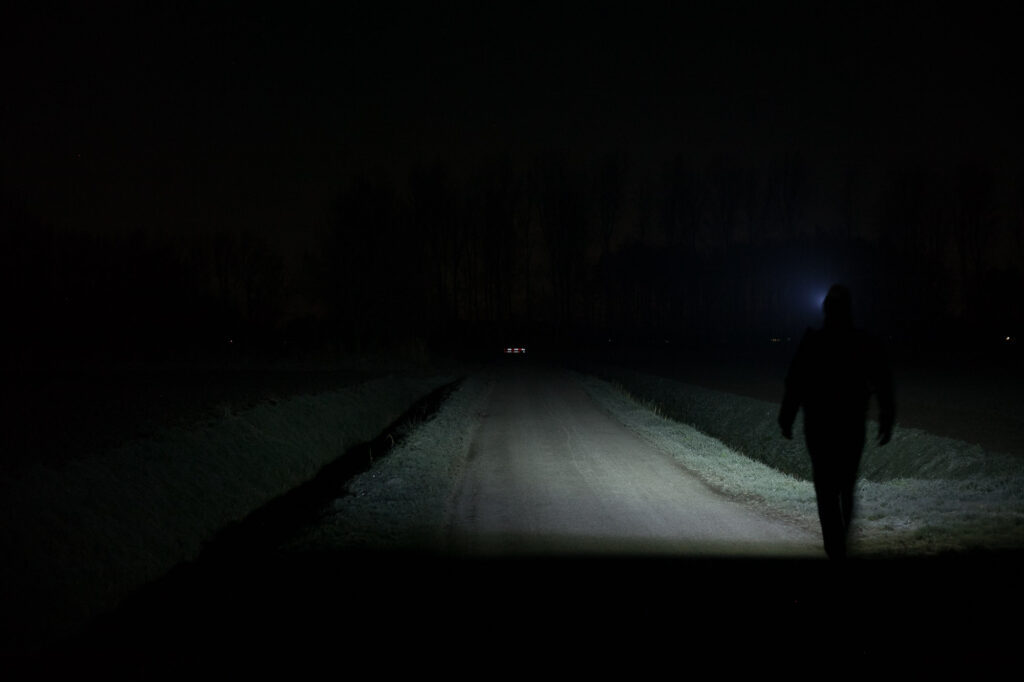
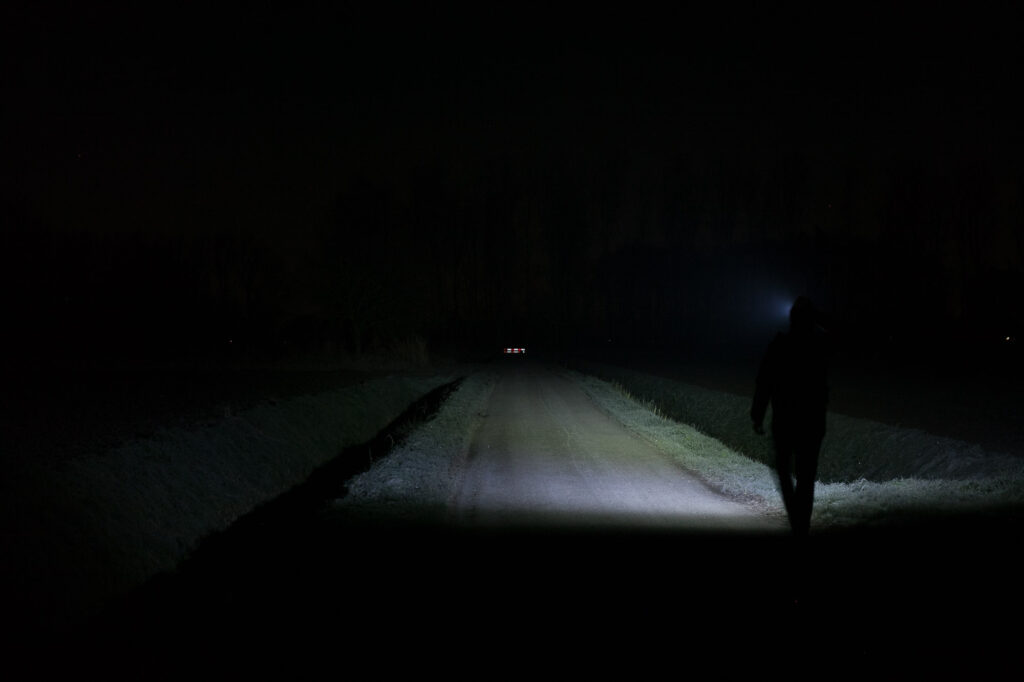
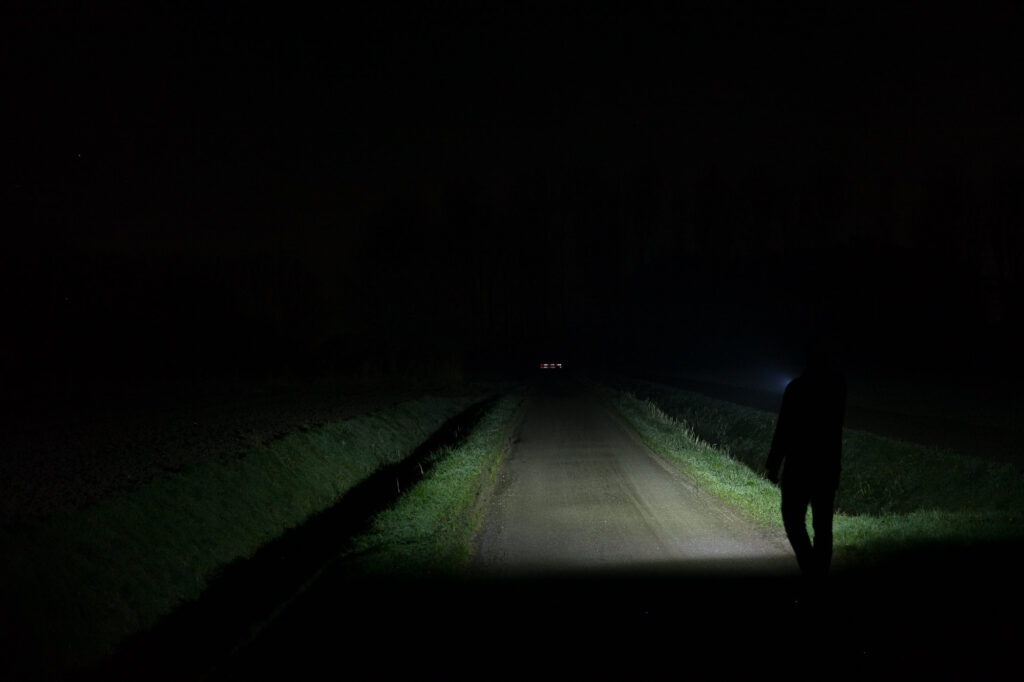
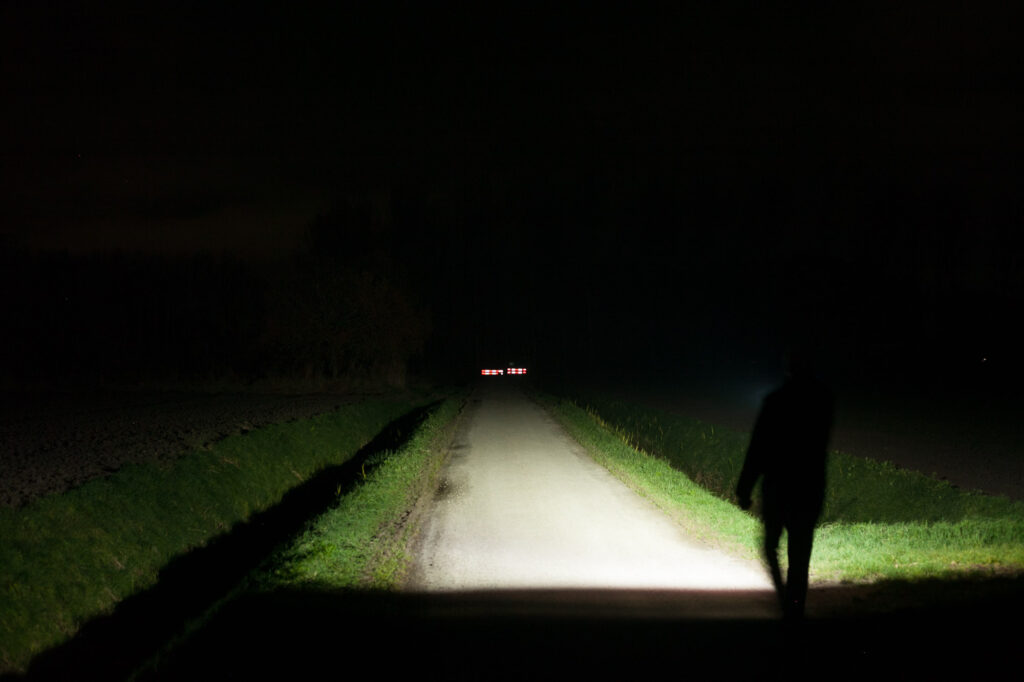
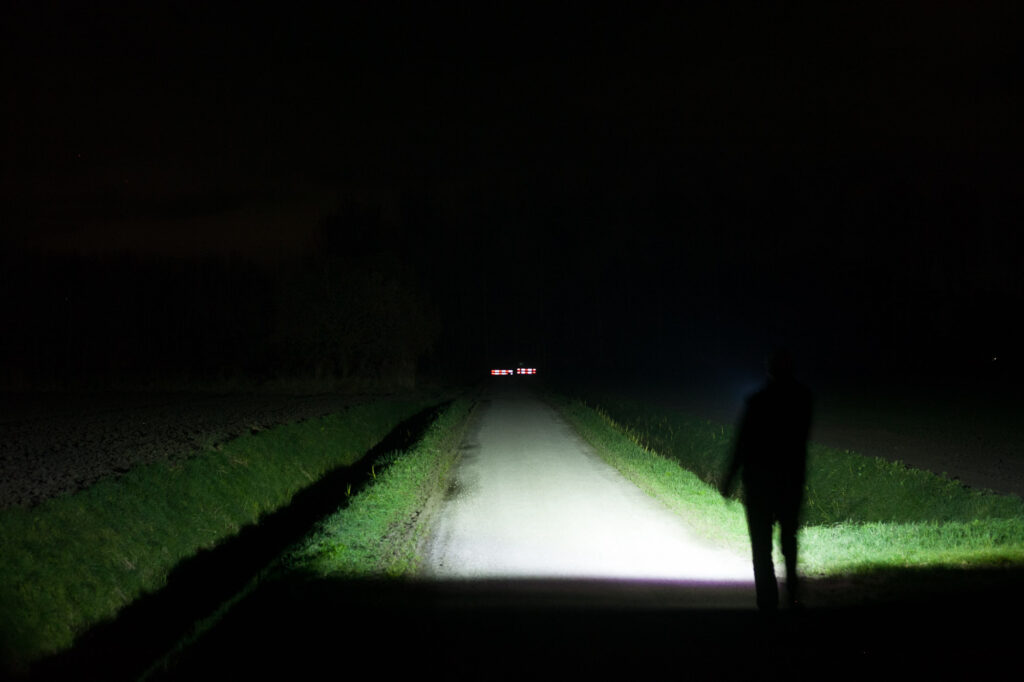
Disclaimer: This flashlight was sent to me for review at no cost by Vosteed. I have not been paid to review, nor have I been holding back on problems or defects.
Final Verdict
Pros
- Looks better in hand that in pictures!
- Plenty bright for such a small light
- Choice between high CRI and cool white
- Includes a USB rechargeable 18350 battery
- Available in different body colors
- Mode memory, and mode order are programmable.
Cons
- 8 taps to enter configuration mode. I would prefer 20+ taps
- Not reaching claimed output
- Short runtimes
Explanation on star ratings:
1: Avoid: my phone flashlight would be a better choice – 2: Poor: significant defect or issues; almost unusable – 3: Average: some defects or issues; but still usable 4: Good: recommended (minor issues) – 5: Great: highly recommended

4 stars: ★★★★
The Vosteed Rook may not be the brightest flashlight out there, nor does it have the best runtimes. For the use case (EDC) I think it’s still an okay option if you like the relatively unique design, color options, and built by a flashlight enthusiast, Rey.
There are a few cons I would like to point the makers to, to make it an even better offering.
Buy your Vosteed Rook at Vosteed
1lumen selects and reviews products personally. We may earn affiliate commissions through our links, which help support our testing.